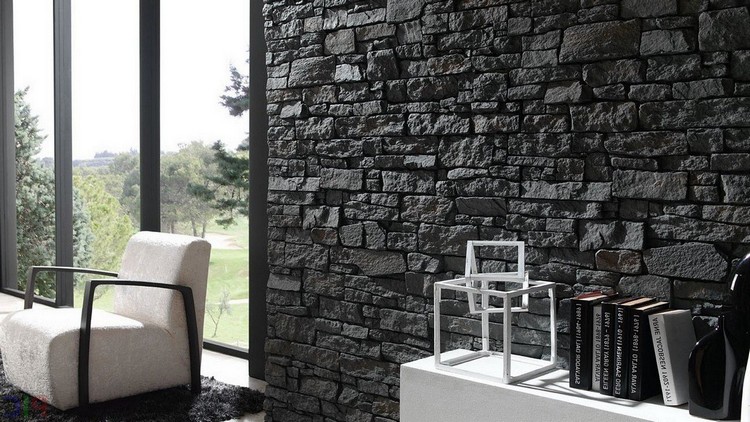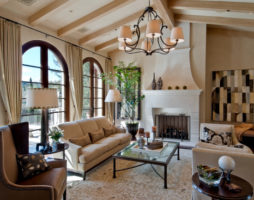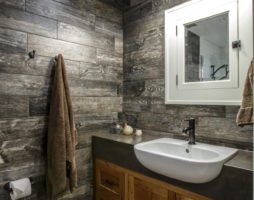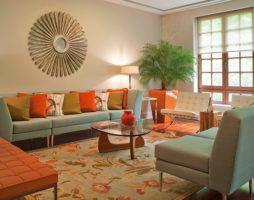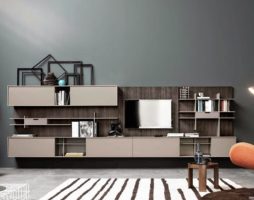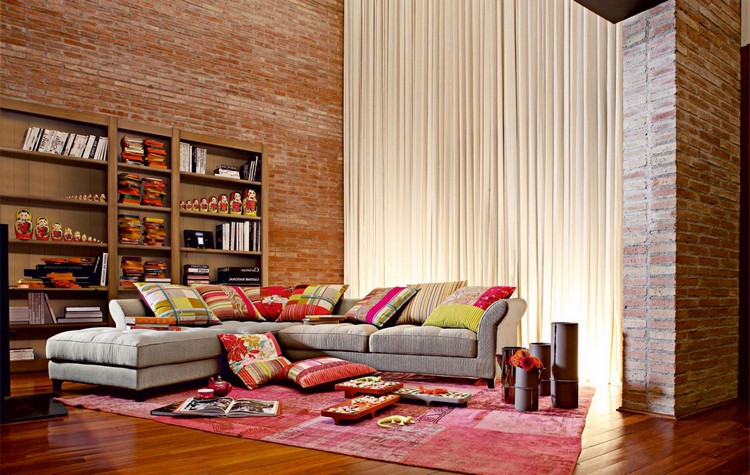
When looking for an original option for finishing the main room in the house - the hall, you should take a closer look at the analogue of sedimentary rocks. Artificial stone in the interior of the living room can act as a monolithic wall, ceiling or small inclusions in the form of panels, decorative inserts, facing the fireplace portal or columns.

Innovations in the production of finishing materials have achieved incredible success. Composites and agglomerates are extremely difficult to distinguish from natural granite, onyx or marble. Their color, shape and texture identically imitates genuine layered rocks with torn edges and embossed texture. This is achieved through micro-components that perfectly copy natural patterns, creating a similar relief through the use of forms with typical outlines.

In terms of operational properties, this finishing material is significantly superior to outlandish sedimentary rocks. Diverse in color and shape, artificial stone in the interior of the living room will create an unsurpassed atmosphere, giving a feeling of being in nature.

Artificial stone in the interior of the living room: variations of use

Composites and agglomerates differ not only in aesthetic beauty, but also in impeccable practicality. Unlike wallpaper or paint, often used in the decoration of the hall, artificial stone does not change its original color under the influence of direct sunlight, and is extremely resistant to abrasion. Therefore, it is so often used in the design of different parts of the hall:
- Framing door, window openings, arches. Due to the high traffic, door slopes quickly lose their original appearance and require replacement. Because of this, it is reasonable to make an arched entrance to the living room using rock imitations. If you use a quartz agglomerate, you will be able to make an impressive-looking monumental doorway that can look like the main property of the hall decoration for many decades. In terms of hardness, it is slightly inferior to the hardest stone in the world - diamond. Quartz agglomerate is extremely difficult to deform or scratch, which is especially important for the entrance and passage areas in the house.
- Facing accent walls. This part of the three-dimensional composition acts as a focal point, concentrating the attention of others on itself. This is the best place to use stone in the living room. A photo of the design of accent walls using proportional masonry or in the form of a shapeless finish similar to natural rocks will help to give a majestic look to the main dominant of the interior of the hall.
- Making corners, ceiling and floor plinths. Framing the walls, ceiling and floor of artificial stone will create the effect of depth, emphasize the primacy of the natural component in the interior design concept of the living room.
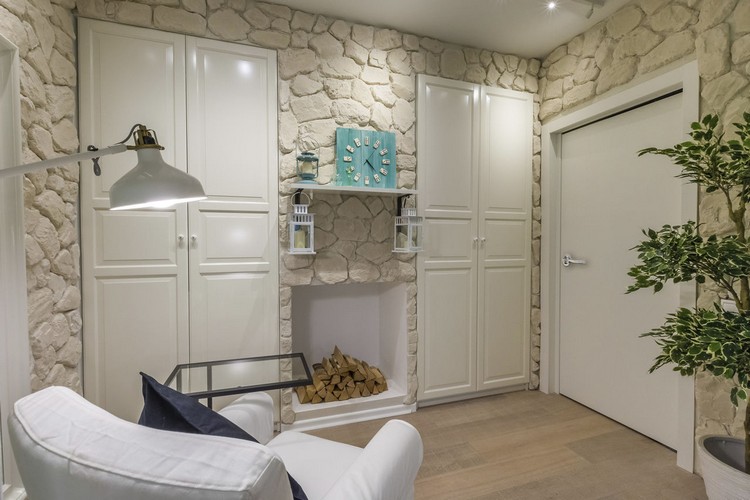
A dynamic visual effect is created by an artificial cast, concrete, gypsum stone with thin veins or granular inclusions. Therefore, it is reasonable to use it to design the basic accents in the picture of the interior with intricate architectural forms.

Design solutions for the use of artificial stone in the interior of the living room
It is customary to decorate the walls in the representative zone with paintings, photo frames, handicrafts and other decorative items. An impeccable background will be stone cladding with a natural color - graphite, brown, brown and its many-sided gradations. If interior decorations have many small details, then you should give preference to large-format tiles made of decorative stone. Against such a background, it is comfortable to consider in detail the execution of decor items.
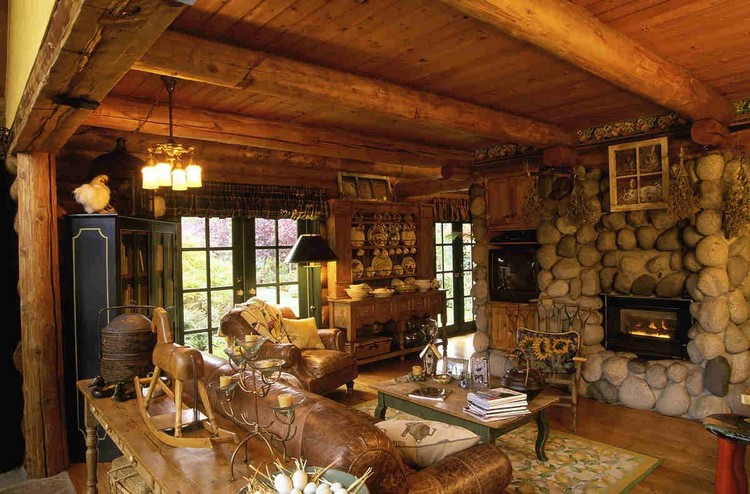
It is important to support the natural aura created by artificial stone in the interior of the living room with an abundance of indoor plants in outdoor pots and hanging planters, paintings with pastoral scenes, home-made products made from natural materials. Imitation finishes made of sea pebbles, shell rock or river sand organically resonate with aquariums, florariums, cages with birds or exotic animals.
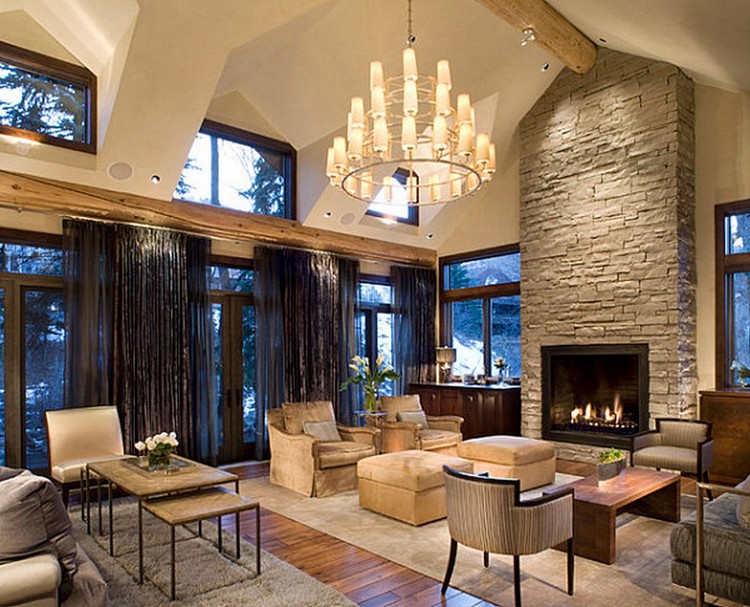
If in the spacious hall of a country house you can safely decorate all parts of the room with a decorative stone with a voluminous pronounced relief, then for a living room in an apartment this is an extremely unsuitable option for covering walls and floors. Dimensional-looking decoration will significantly reduce the free space in the room where it is customary to welcome guests. For narrow and small halls, you need to select types of decorative stone with a perfectly polished, even surface and a light color.

A variety of ways of fragmentary laying of artificial stone in the living room are welcome. Photos of curly wall decoration clearly demonstrate the diverse ways of highlighting accent notes in the interior picture. Stone edging on the wall can be surrounded by remarkable clocks, animal horns, antique wall candlesticks, shelves with souvenirs brought from distant lands, and many other things worthy of everyone's attention.

Modifications of artificial stone
Just a few decades ago, stone trim adorned only the facades of the house and was extremely rare in luxury apartments. Today, affordable and malleable composite materials are often used by designers for cladding not only the walls, ceiling or floor of the living room. Artificial stone in the interior of the hall is used for the manufacture of furniture parts, architectural and decorative elements. It is important to figure out which type of stone is best suited for a variety of design tasks:
- Acrylic composite material is characterized by high hardness, strength, resistance to mechanical stress. It is widely used in the production of countertops for chests of drawers, consoles, secretaries, coffee tables, TV cabinets and other elements of living room sets. It is worth noting that furniture frames, underframes are made of similar types of stone, which can withstand the high load of heavy countertops.
- Decorative cast marble differs in unsurpassed operational properties. Only natural stones surpass it in strength: granite, marble, quartzite, slate, travertine. This artificial stone in the living room is found in the form of the base of monolithic window sills, mantelpieces and portals. The cold emanating from snow-white marble with black veins should be leveled with curtains made of weightless fabric and decor items in warming sunny colors.
- Artificial concrete brick, pebbles, agglomerate based on quartz granules is ideal for wall decoration in the living room. To perform facing work, they are produced in the form of large-format plates. This allows you to make a seamless wall covering. Solid stone canvases on the walls not only look majestic, but are also extremely convenient to use. The perfectly smooth surface is easy to clean. The absence of pores and seams eliminates the likelihood of the formation of fungi, mold, dust accumulation.
- If there is an idea to organize a decorative fountain, then it is difficult to choose a facing material for framing it better than an acrylic composite with a resinous base with the addition of mineral fillers and organic dyes. It is famous for its excellent water resistance and wear resistance.

So that the granite floor or stone wall in the living room does not create the feeling of being in a dark cave, it is advisable to pay special attention to the choice of wide profiles for windows and the organization of multi-level lighting. A well-thought-out lighting system created by different light sources is relevant for a hall with stone finishes and furnishings. The general atmosphere that prevails in the living room with monumental furnishings and decorations depends on this.
Distinctive features of decorative stone

Depending on the composition of microcomponents, the method of firing and processing, artificial stone looks completely different, which allows it to be used for different purposes when decorating a living room interior:
- Porcelain stoneware is made from spar, organic elements, clay. At the final stage of processing, stone slabs are ground, polished, glazed. Samples with a matte surface should be used as a priority for flooring, and with a smooth one - for finishing walls, interwindow space.
- Decorative stone made of colored concrete can have all sorts of colors. Designers often cover walls with multicolored elements in order to maintain a color balance with the palette of surrounding furnishings. Reinforced concrete slabs with a natural grayish-whitish color in the form of genuine boulders and cobblestones are widely used for wall decoration, imitating the look of living rooms in ancient houses, where the spirit of antiquity prevails and a home is always present.
- Clinker tiles are a type of artificial stone produced in the form of panels to recreate the look of brickwork. Perfectly even layouts of clinker tiles look original both in the fireplace area and on the accent wall in tandem with a thin TV screen.
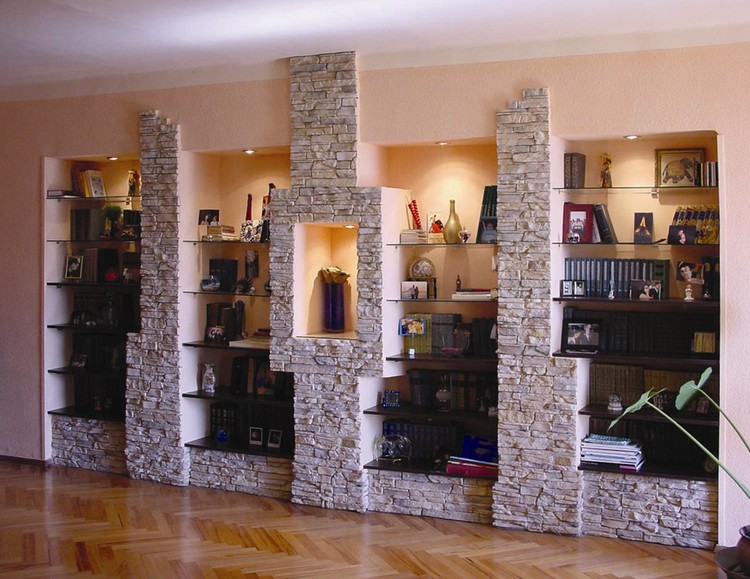
In addition to external attractiveness, this finishing material is characterized by impeccable properties:
- Due to its light weight, it gives a minimum load on the walls. It can be used to decorate interior partitions not only from concrete, but also from drywall.
- High strength, resistance to mechanical stress determine the long-term service life. In the event of a microcrack or chip on the stone coating, the flaw can be easily masked by fragmentary replacement of the deformed elements.
- Due to its excellent fire resistance, it is actively used to decorate the portal, chimney and other parts of the fireplace area.

Rules for combining artificial stone with interior items
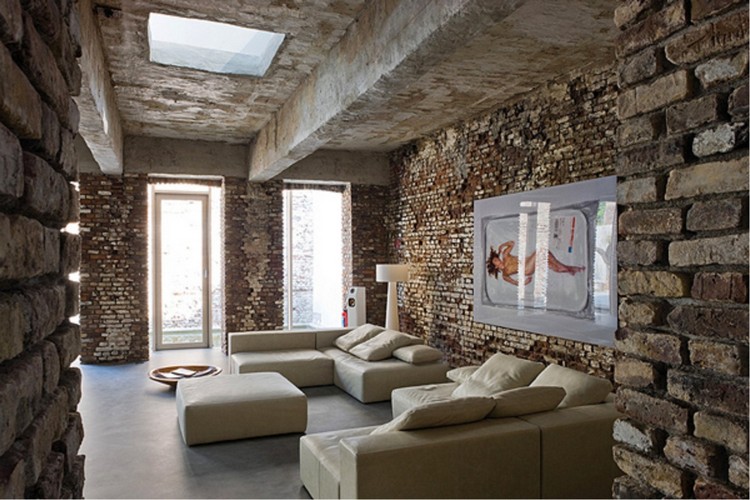
The design of the living room calls for creating a harmonious picture of the interior, where it is comfortable to be both alone and in the company of friends or relatives. You will be able to cope with this task perfectly if you choose the right companions for stone finishing:
- If you plan to finish corners or skirting boards using composites or agglomerates, then be sure to install spots on the ceiling or use recessed spotlights to illuminate the floor. Spots with metal shades, unlike polymers, are organically combined with stone decor.
- If imitations of marble or granite are used to cover the floor, then the carpets must be woven from natural raw materials - wool, cotton, silk. A harmonious tandem will be obtained from stone flooring and animal skins, laid out near the fireplace insert or sofa group.

Artificial stone can appear not only in the lining of the living room, but also when decorating it. Plastic agglomerates, unlike natural counterparts, easily take any desired shape. Taking advantage of this property, designers have found wide use of stone in the living room. Photos of wall and table clocks, picture and mirror frames, figurines, vases, caskets, lamp shades and floor lamps with artificial stone inserts inspire you to create an original decoration for the main room in the house. Creatively designed accessories look expressive on a plain background: a wall or a table top.
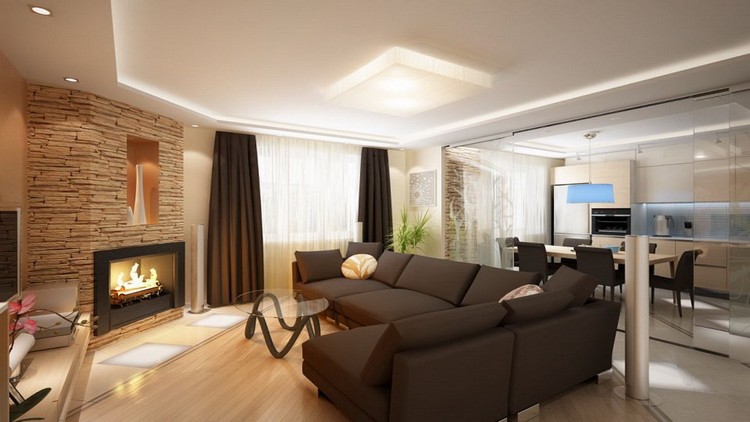
The role of artificial stone in the living room interior with a variable stylistic concept
Each type of artificial stone has unique features that allow you to create a unique interior in any desired design style:
- The monumental appearance of decorative marble will reflect the aesthetics of classical and historical trends in design art: Empire, Baroque, Rococo, Art Deco.
- Acrylic stones with an impeccably smooth and dazzling mirror surface will easily embody the modern trends in interior fashion: hi-tech, modern, industrial style and many others.
- To give the interior of the living room an old look in the spirit of vintage, retro or antique design style, it is advisable to use an artificial stone with an uneven concrete base with an aging effect. Through sandblasting, patination, the addition of ash, tree bark, sea salt, color pigments and other components, decorators manage to achieve incredible results when decorating the living room. The surface of decorative stones clearly demonstrates the “imprint of time”: weathered whitish spots, green coating associated with moss, a smooth base, symbolizing the influence of sea tides over many millennia.
- The best solution for furnishing a room in the Provence style would be to install a soft sofa group, upholstered in a light fabric with a floral print, in tandem with a snow-white acrylate coffee table. This decorative stone differs in excellent durability. Cast tabletops of various configurations are produced from it without a single seam. For the romantic Provence that dominates the interior of the living room, it is optimal to use agglomerates with imitation of wildflowers that have frozen, as if under ice, under a layer of transparent glaze, for decoration.
- The interiors of the living rooms, executed in ethnic styles (Moroccan, African, Oriental), are impressed by the partial decoration of the walls with large stones with a pronounced relief of yellow-ocher tones.
- Wall decoration with coarse-grained composites interspersed with particles resembling fragments of fallen leaves, needles, shells will effectively reflect natural motifs in rooms with the concept of rustic, country, chalet, Scandinavian design style.
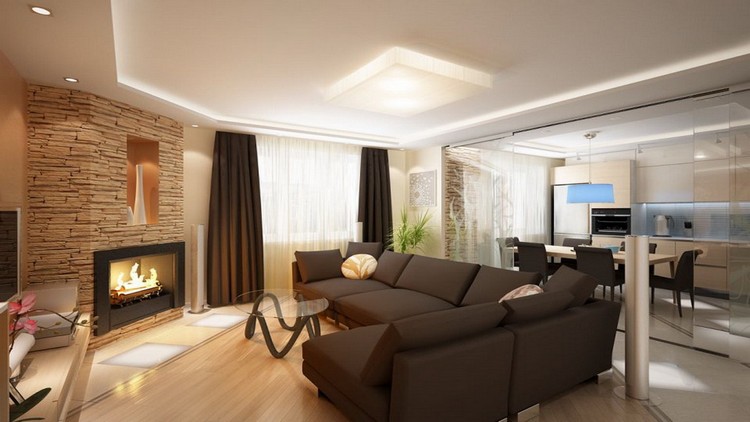
Due to the huge number of modifications of decorative stone with different sizes, shapes, colors and textures for almost every interior genre, you can choose the best look for decoration or decor.
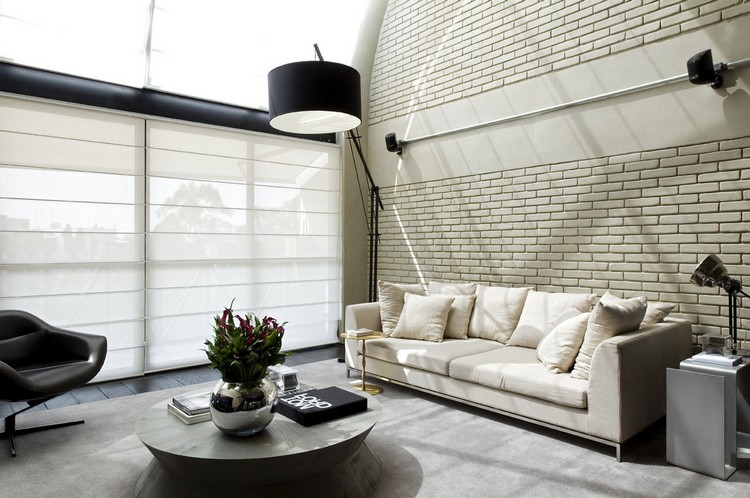
And in the annals of ancient Russian architecture, and in modern architecture, and in the trends of design art, stone actively appears in the interior of the living room. Photos of the diverse options for using composites and agglomerates with natural shapes and shades in decorating the hall provoke preference for finishing materials used for centuries.
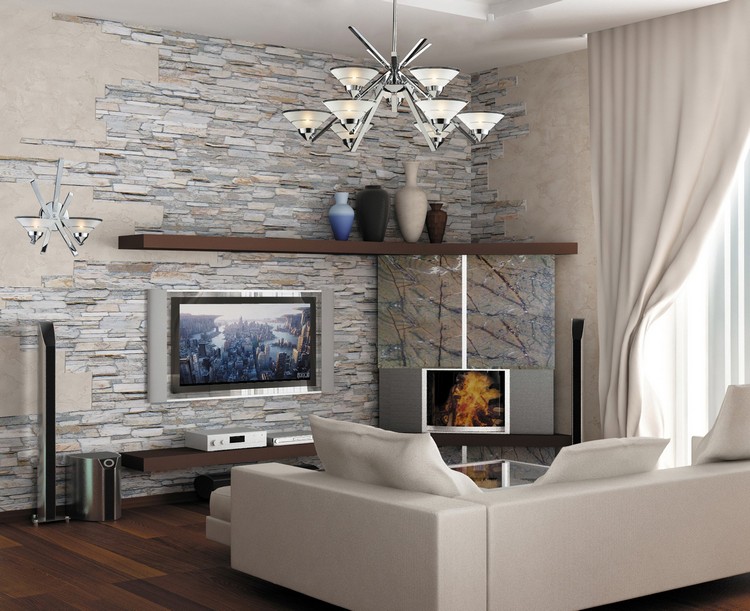
If you want to create a beneficial aura for a complete spiritual rest, it is reasonable to use an artificial stone for arranging the living room interior, which has an amazing resemblance to natural counterparts.
Photo gallery
-
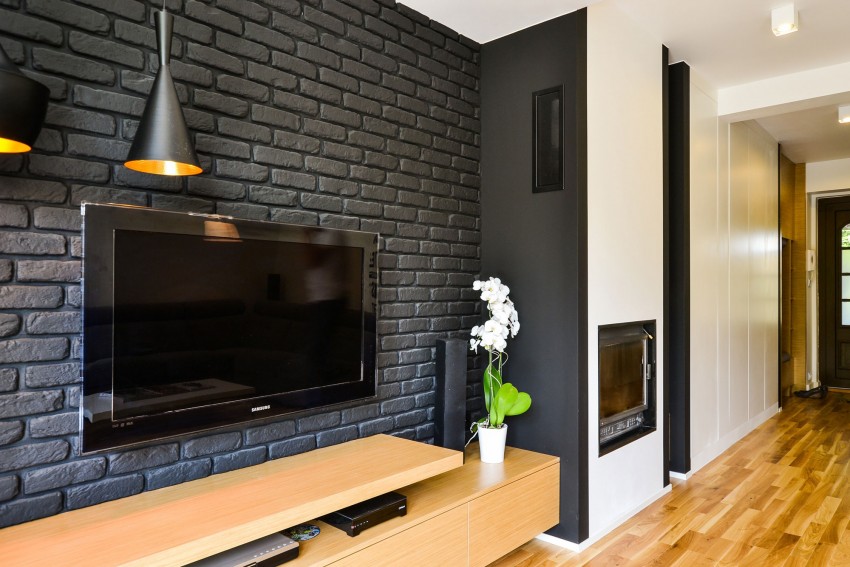
-
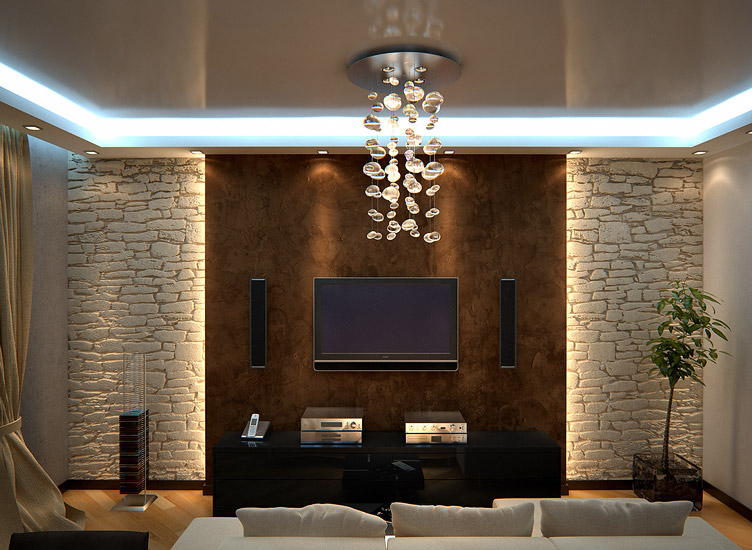
-
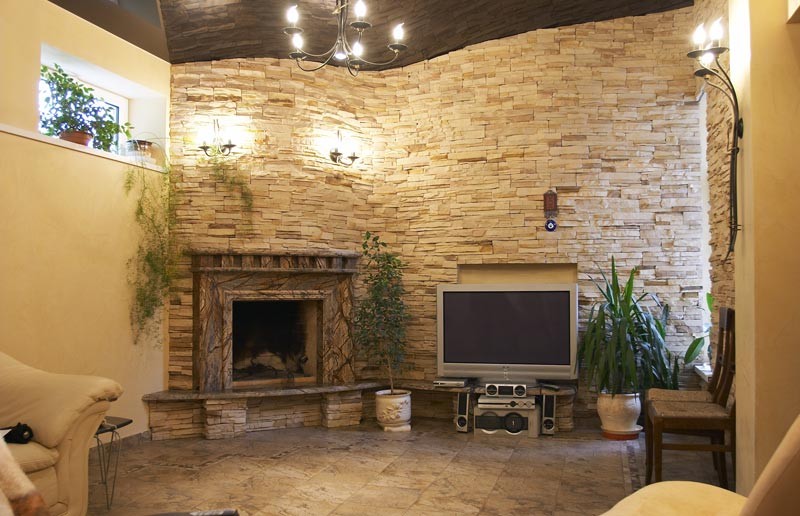
-
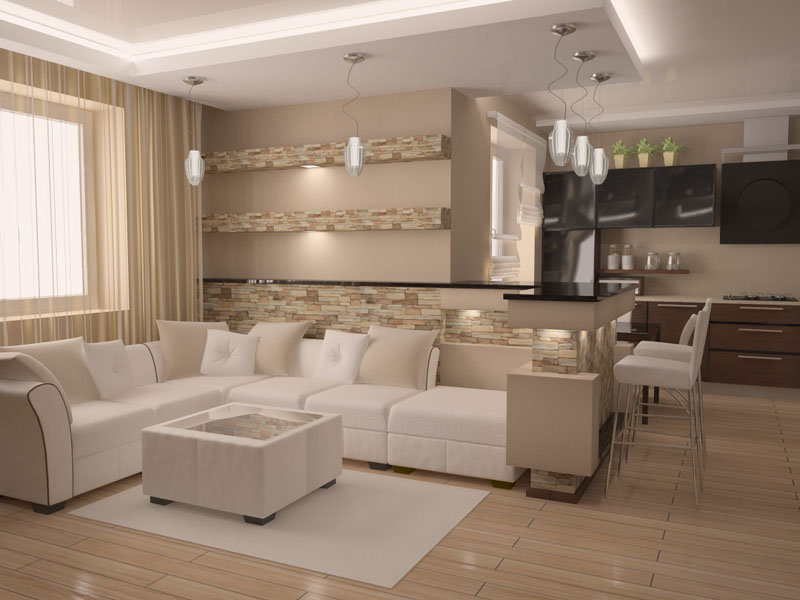
-
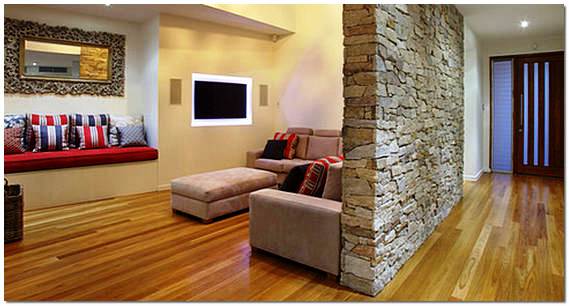
-

-

-
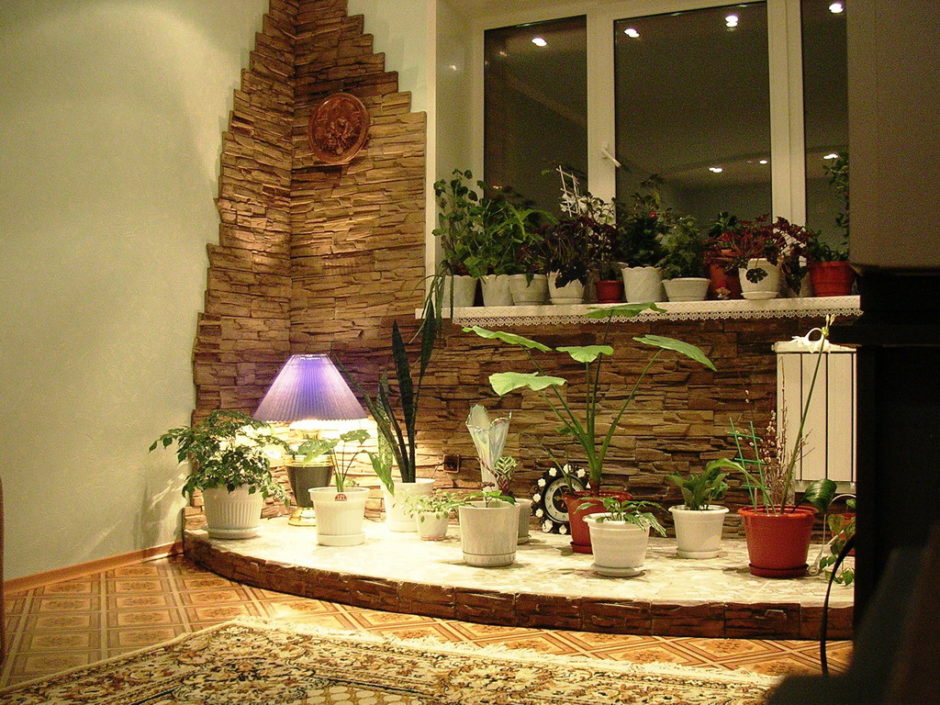
-
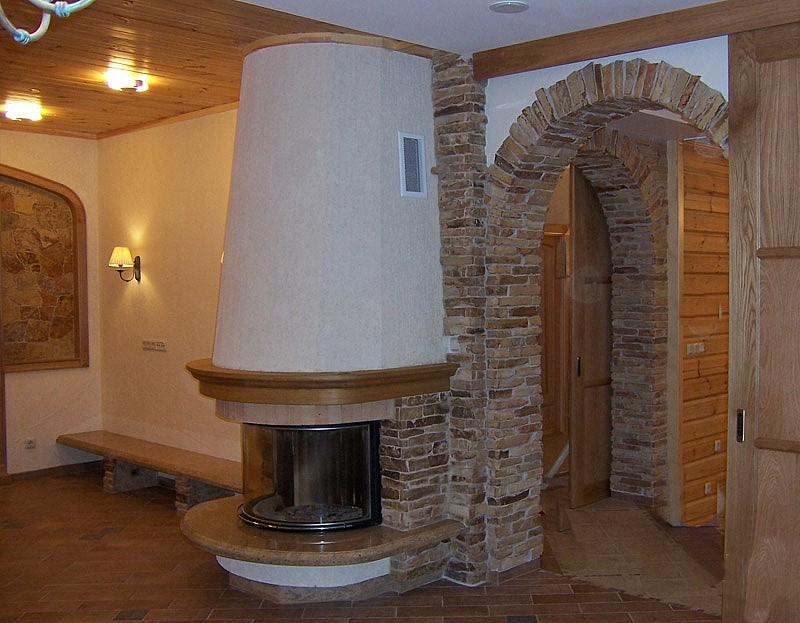
-
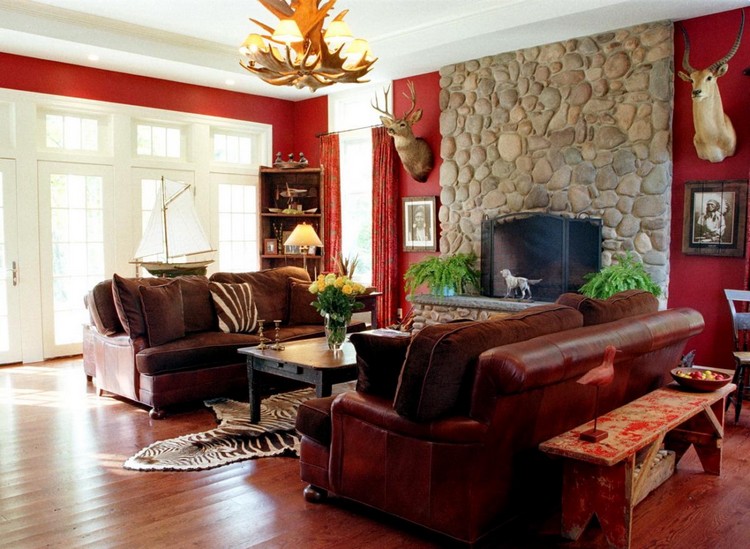
-
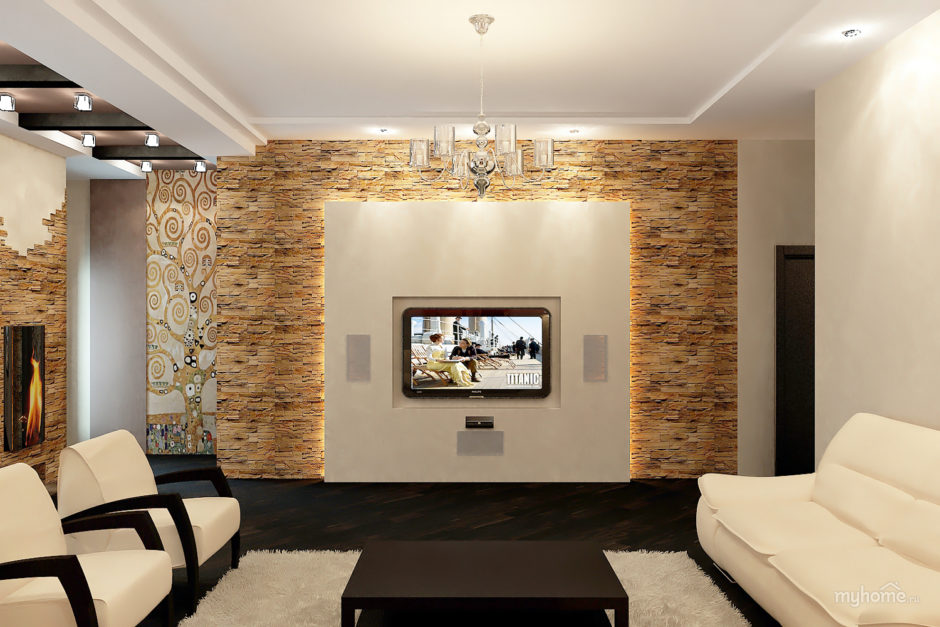
-
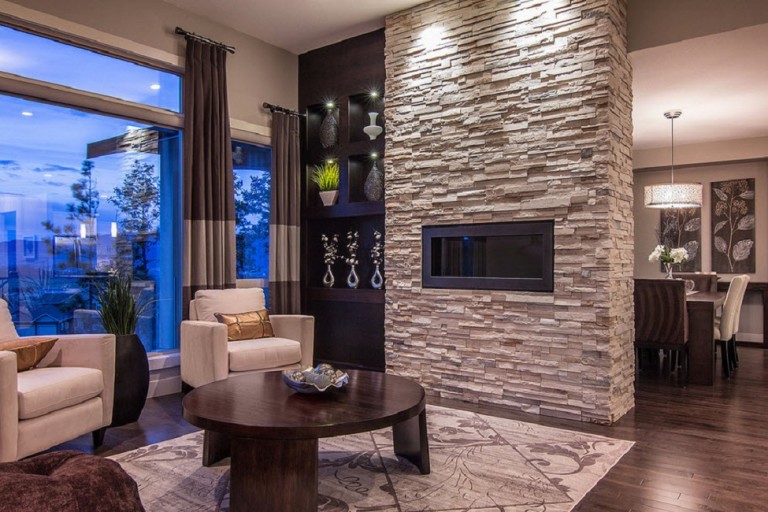
-
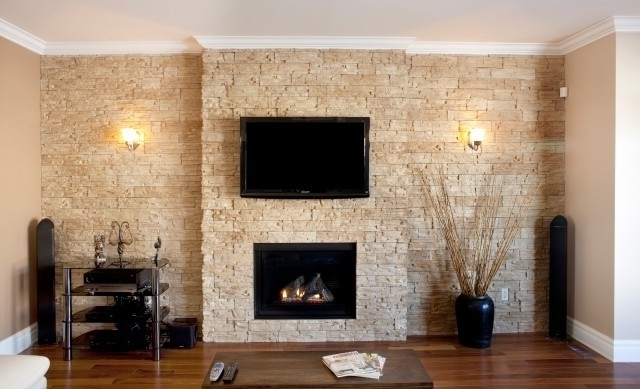
-
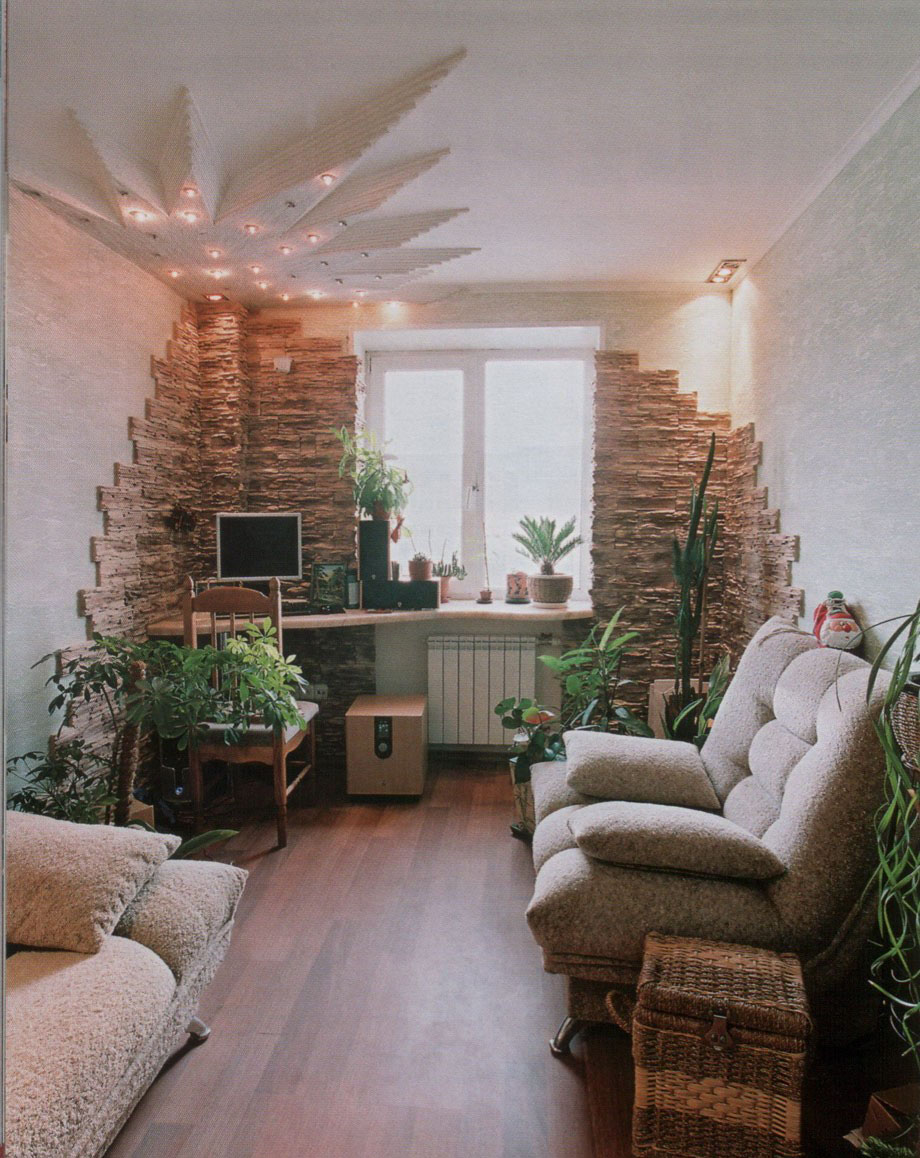
-
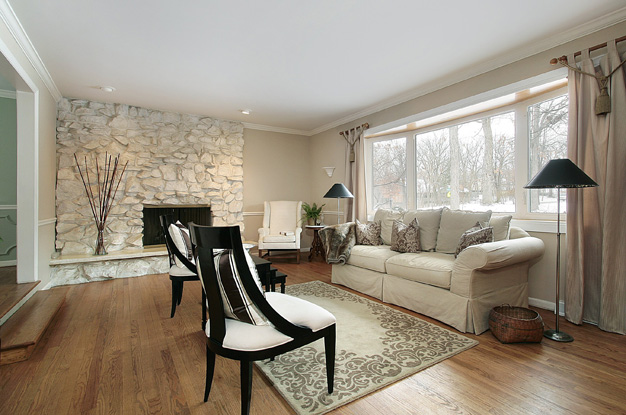
-
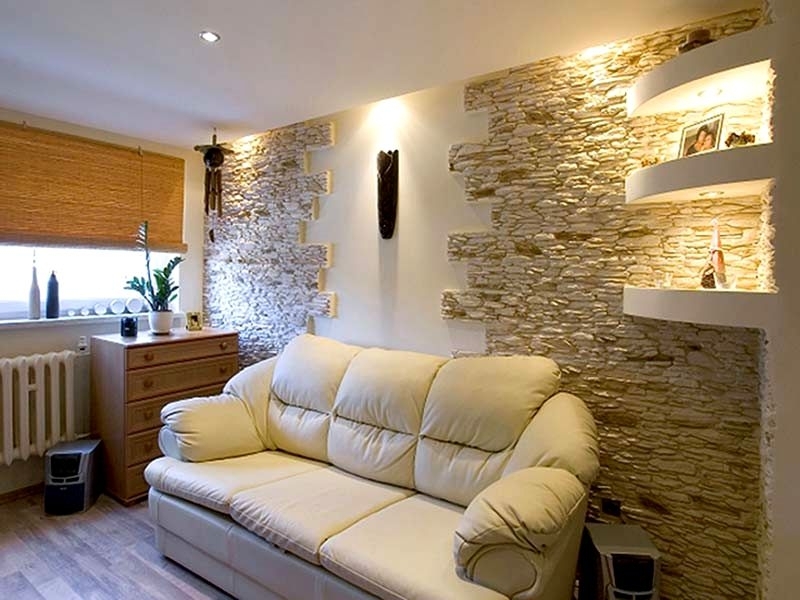
-
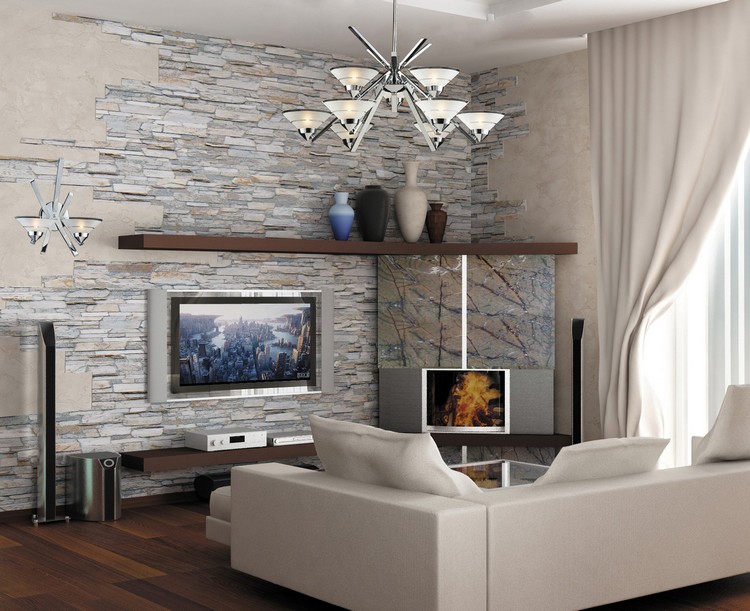
-

-

imagen 7225 -
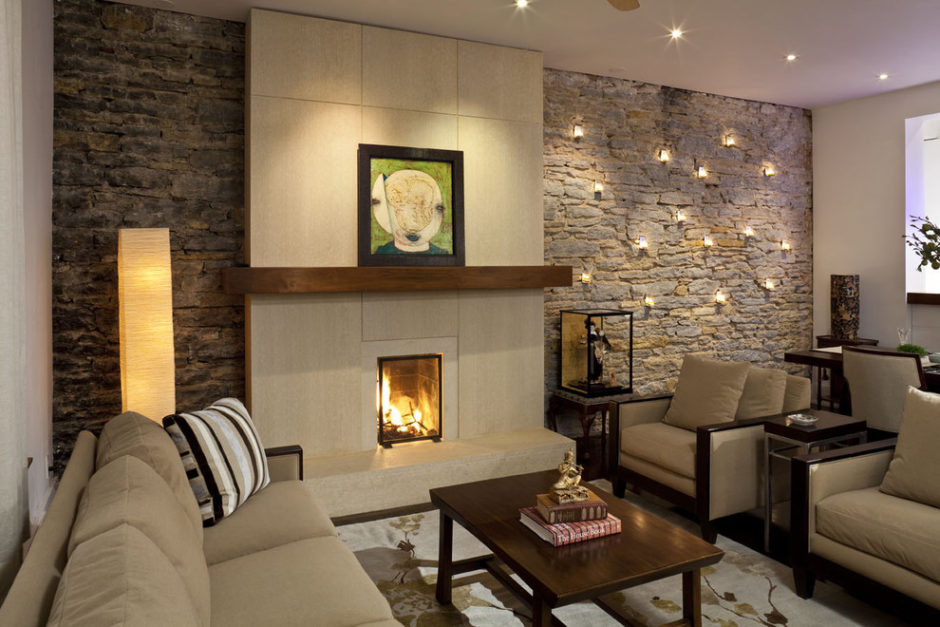
-

-
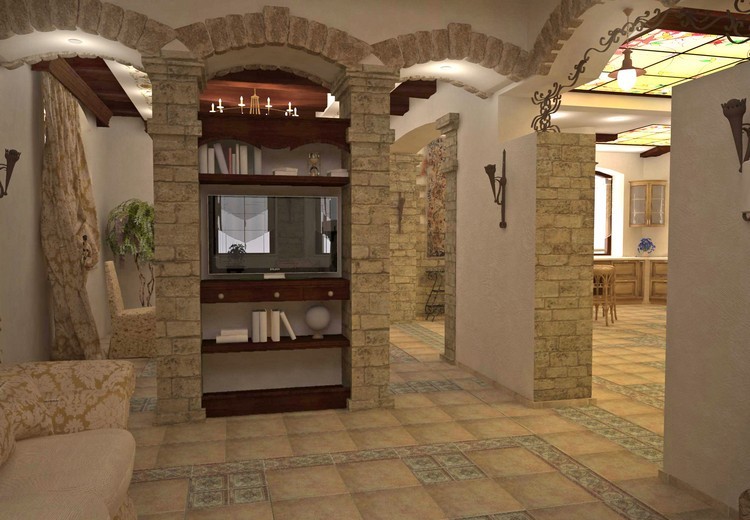
-

-
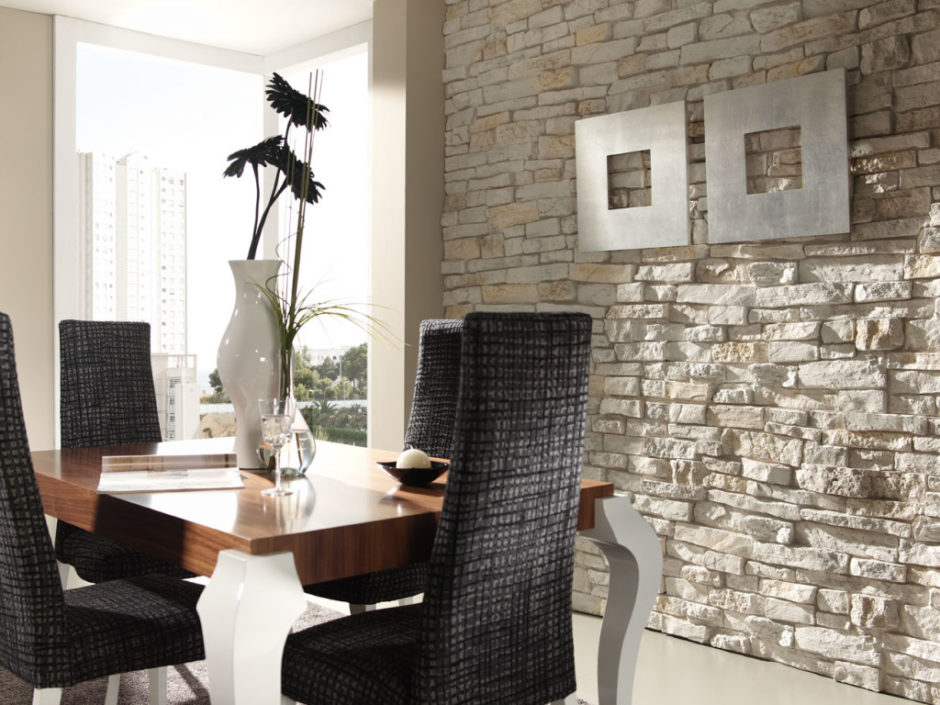
-
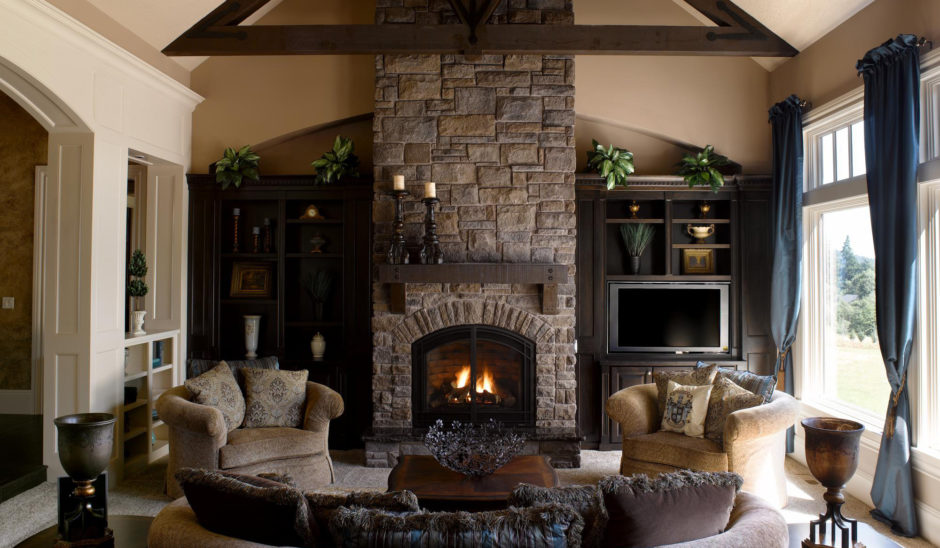
-

-
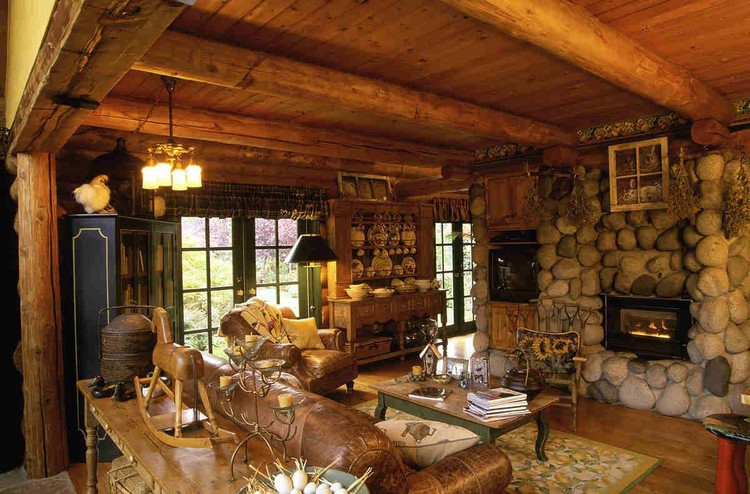
-
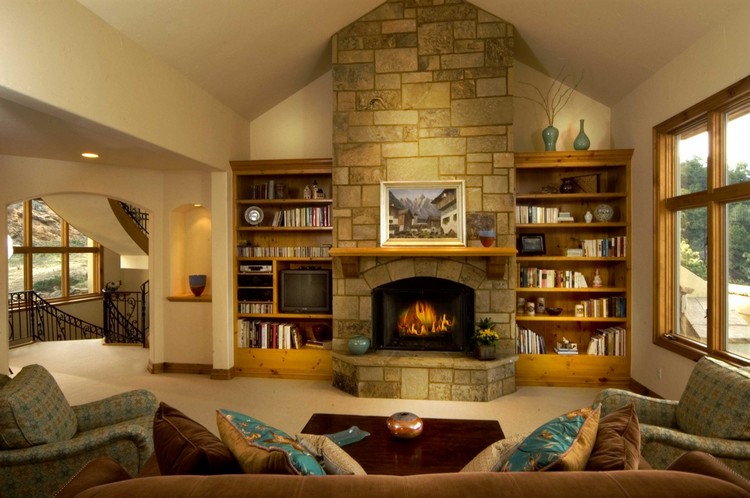
-

-
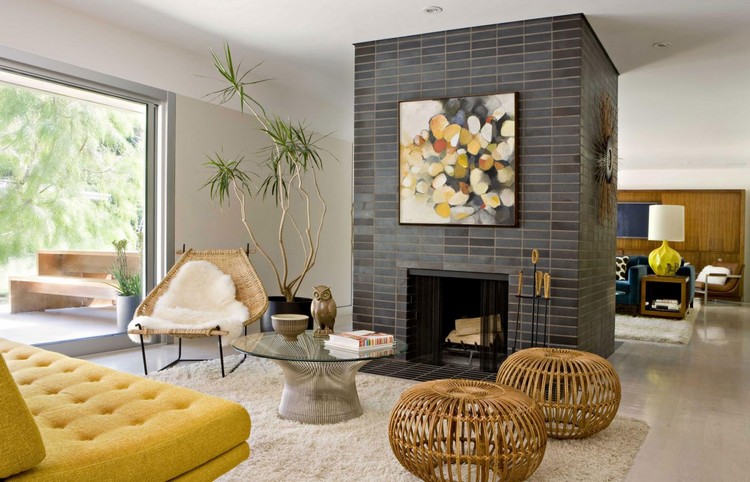
-
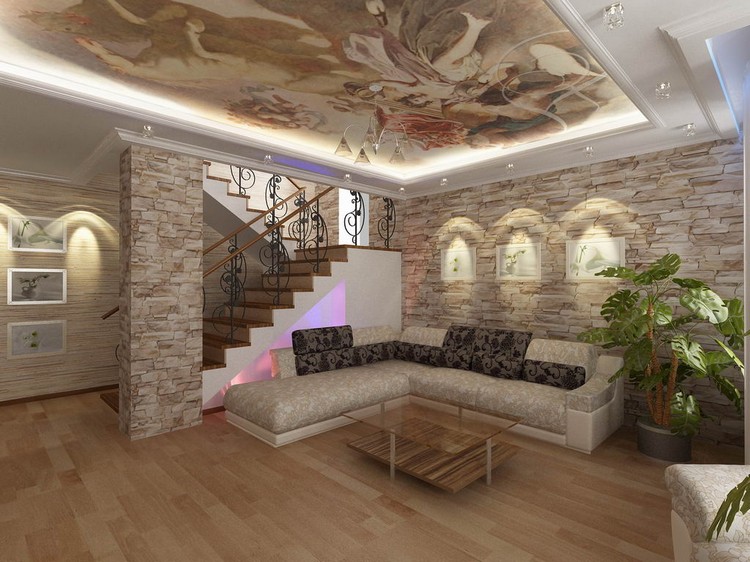
-
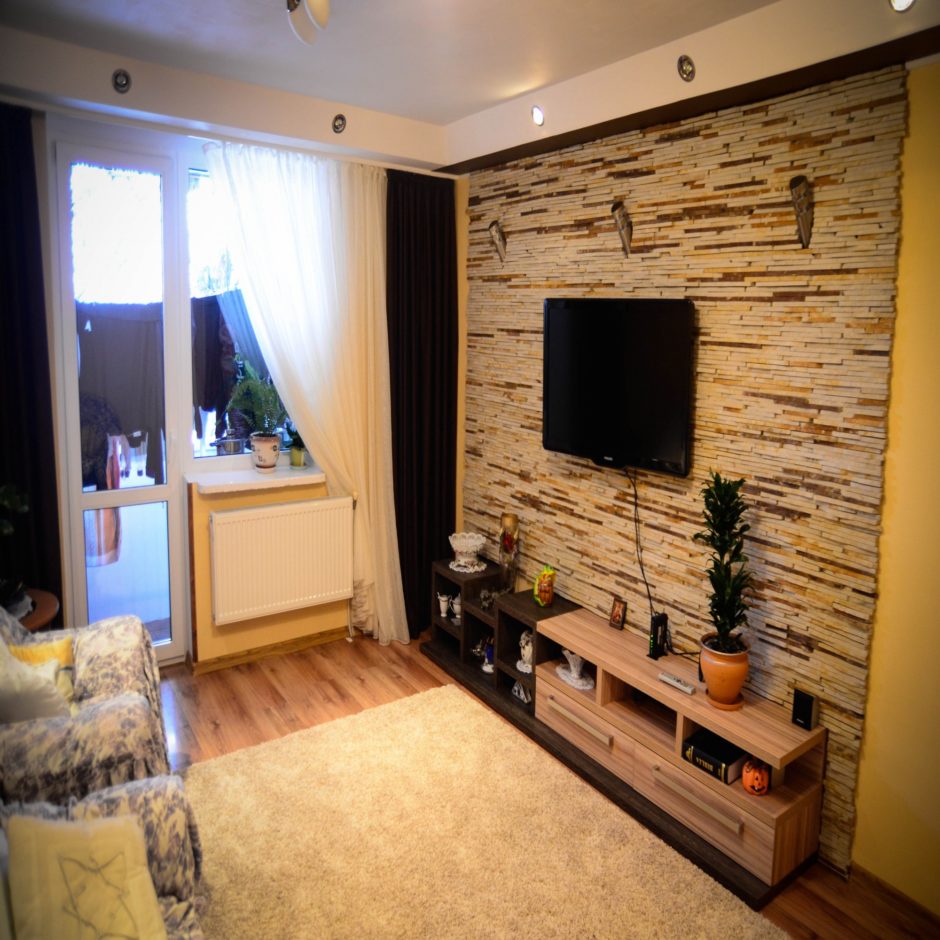
-
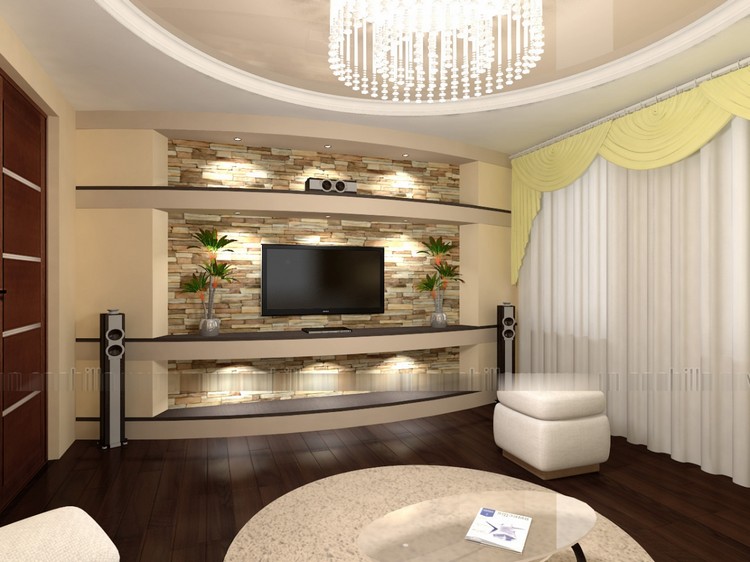
-
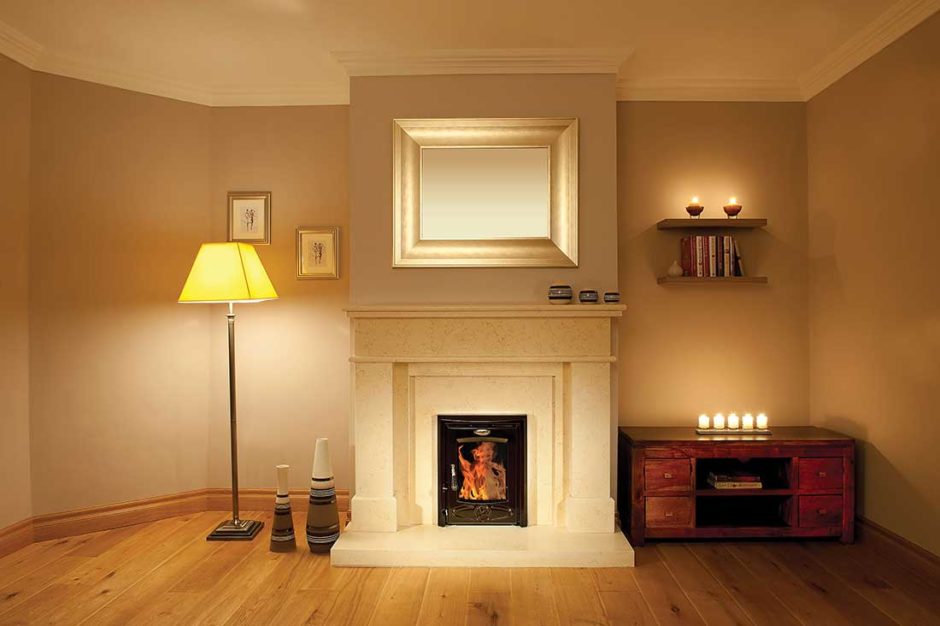
-
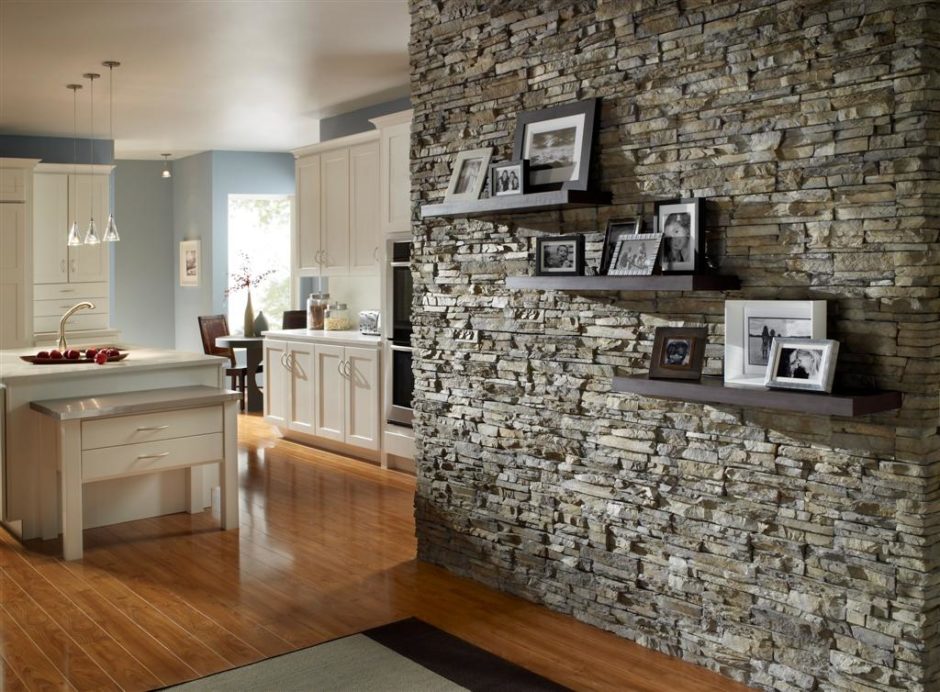
-
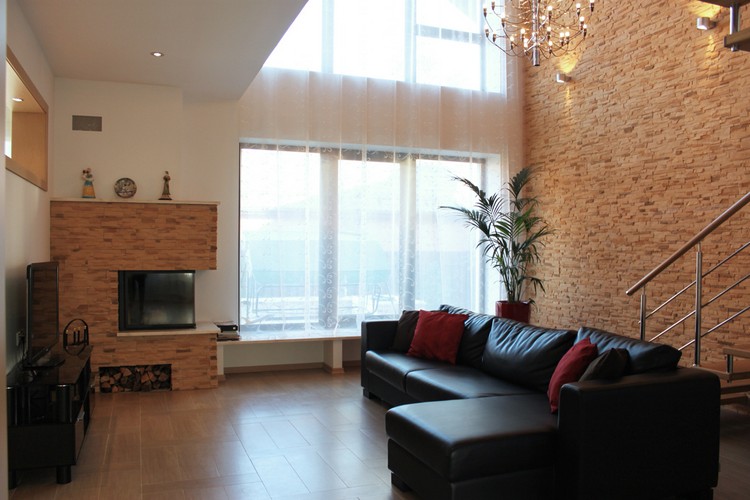
-
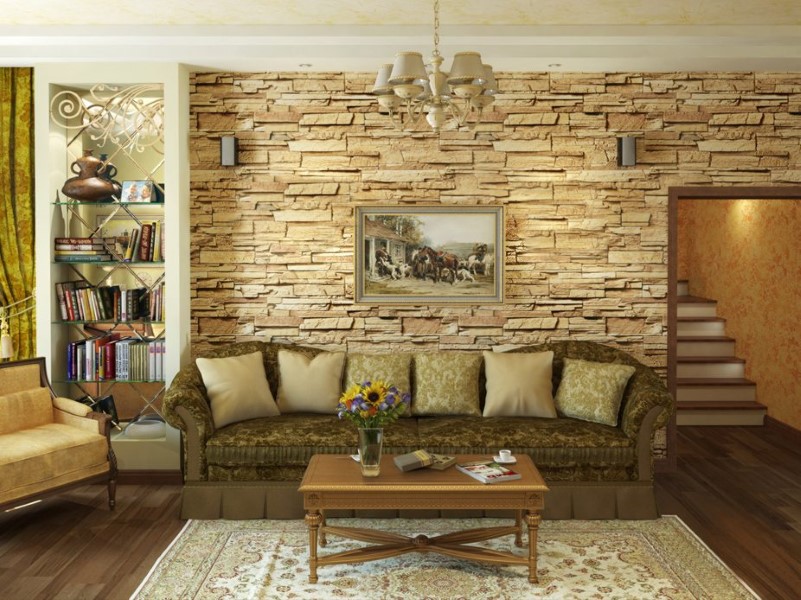
-
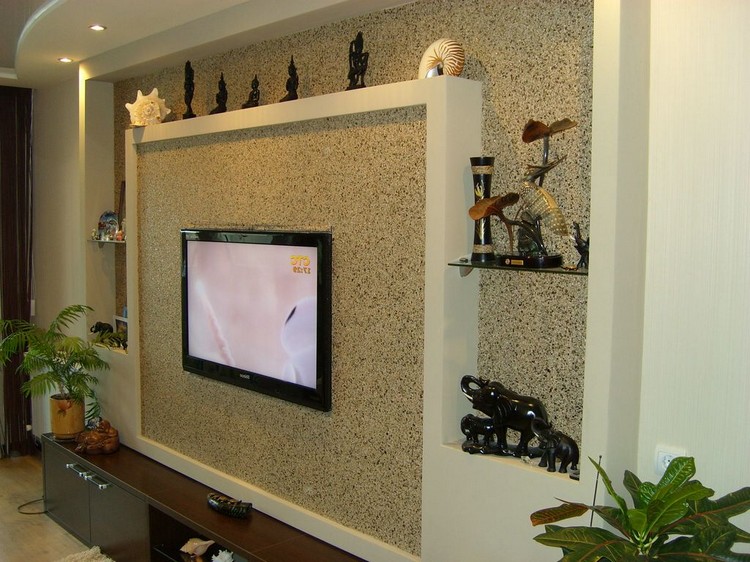
-
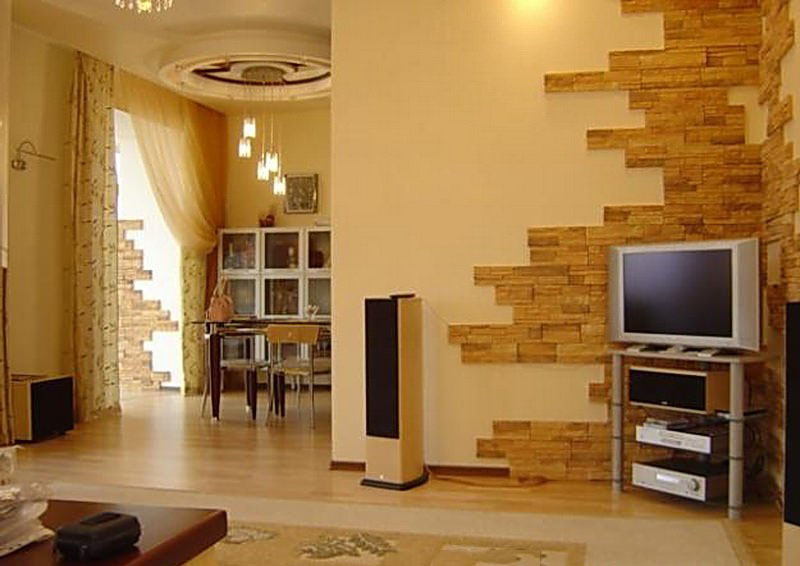
-
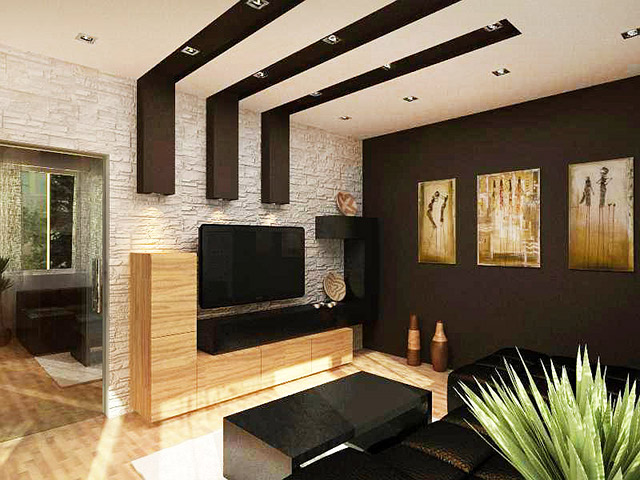
-

-
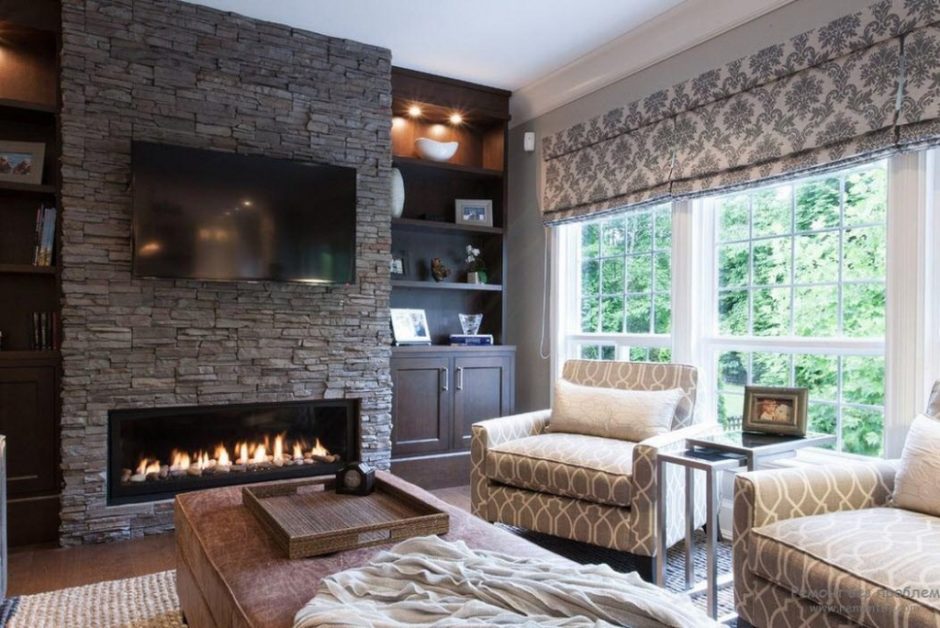
-
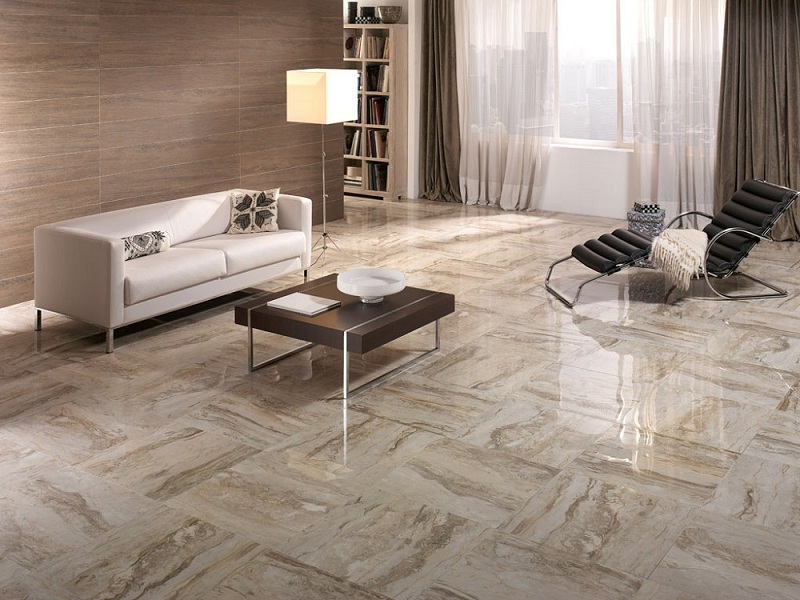
-
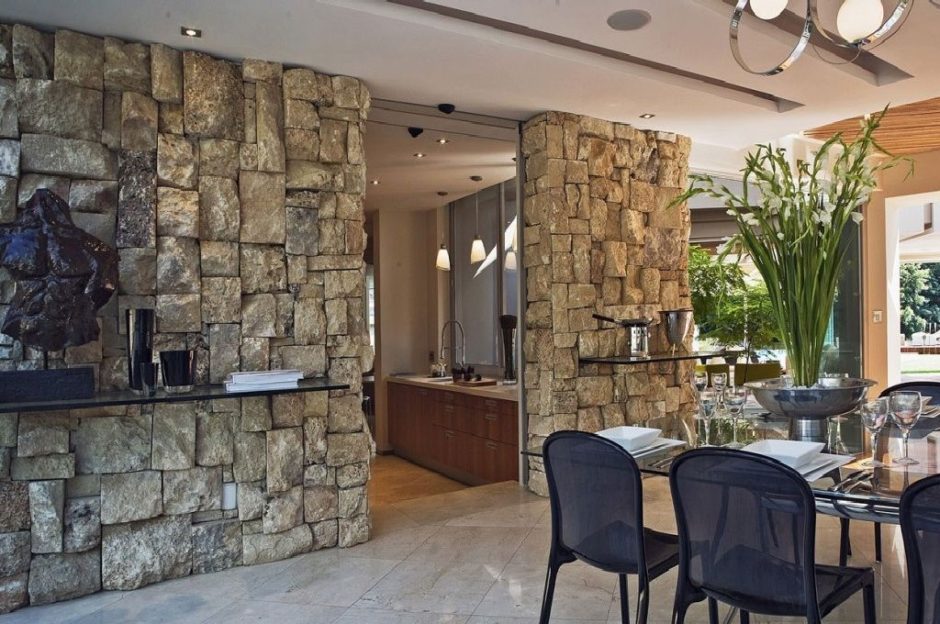
-
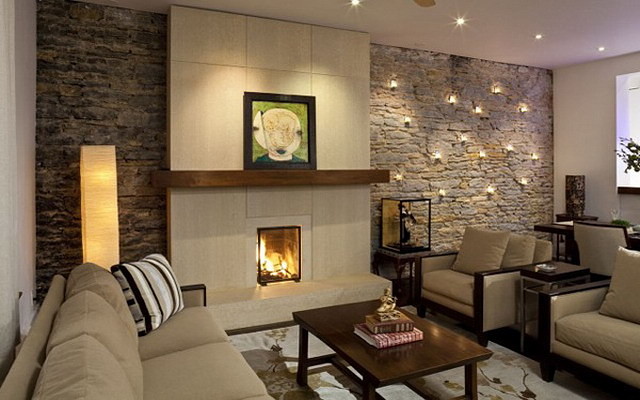
-
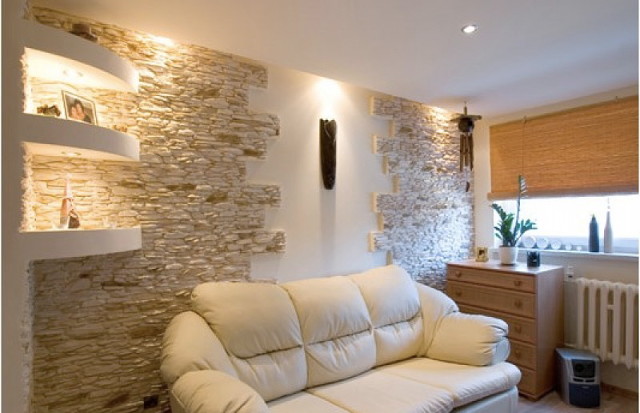
-
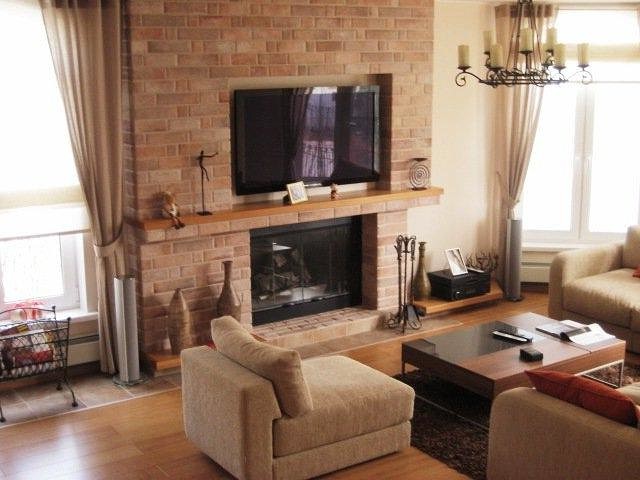
-
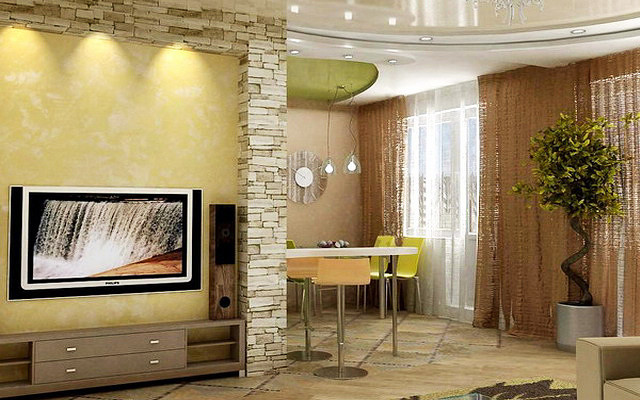
-
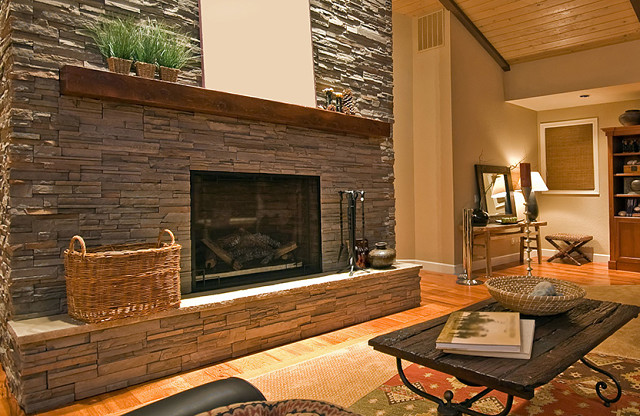
-
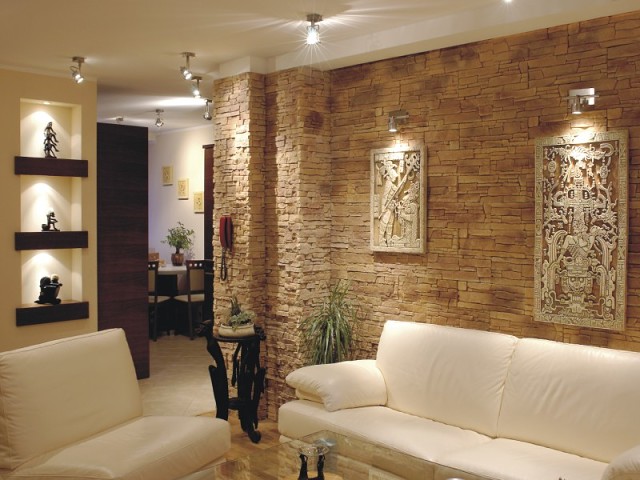
-
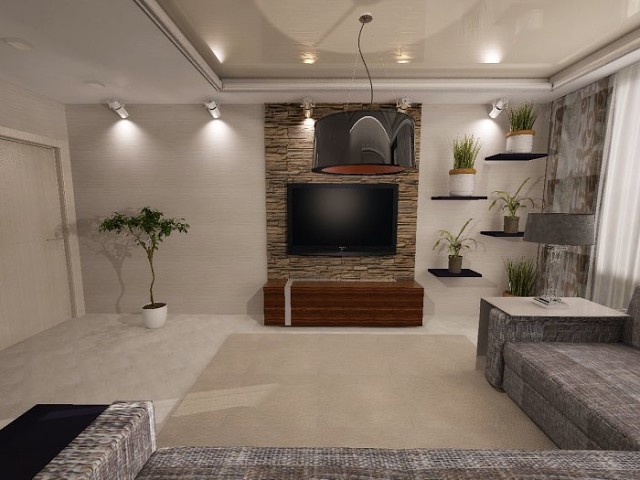
-
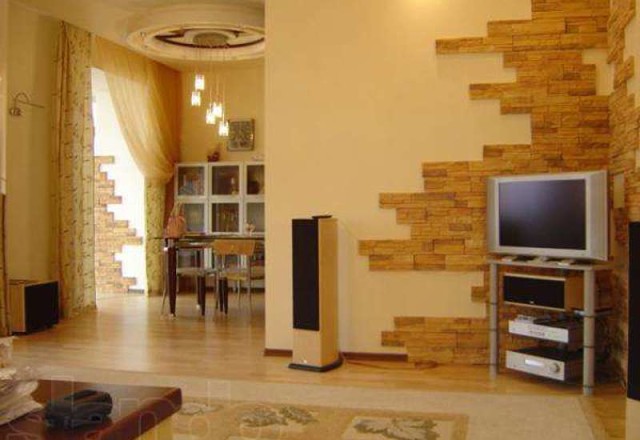
-
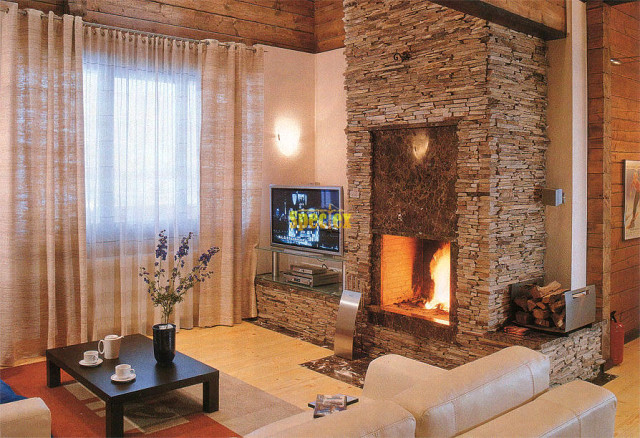
-
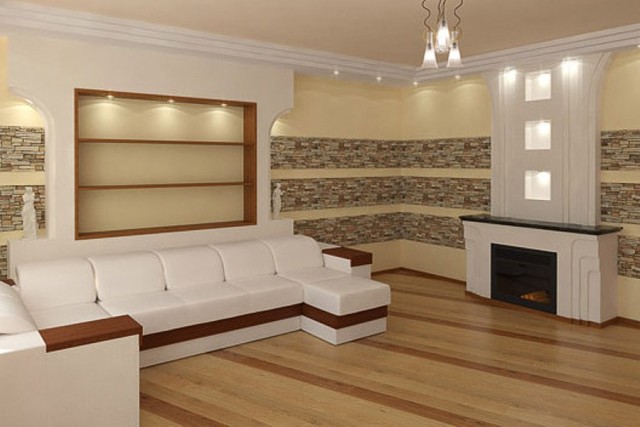
-
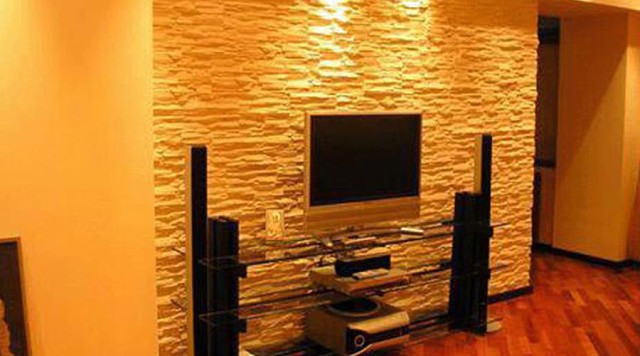
-
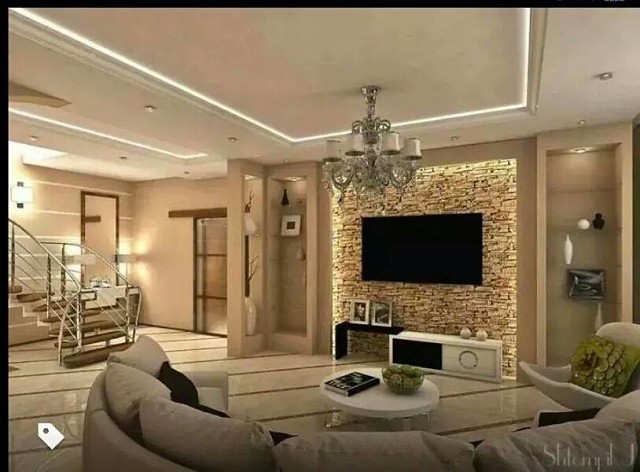
-

-
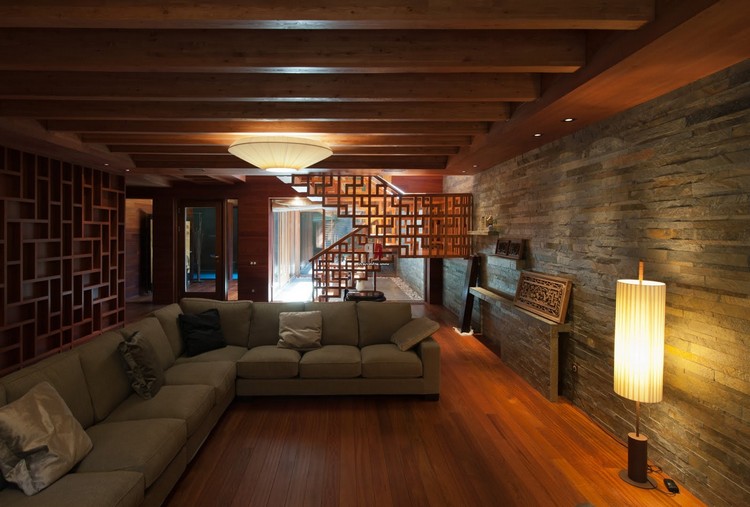
-

-
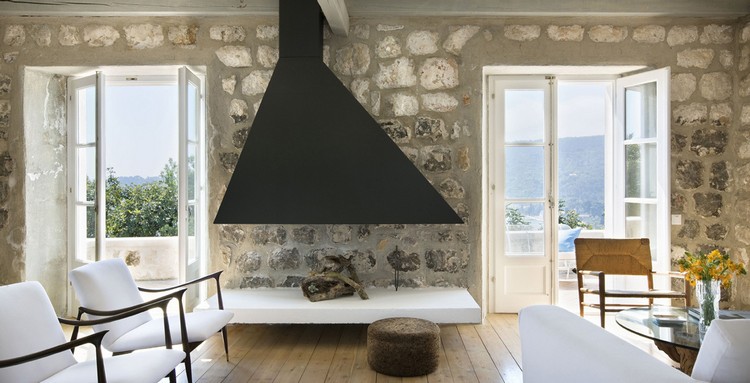
-

-
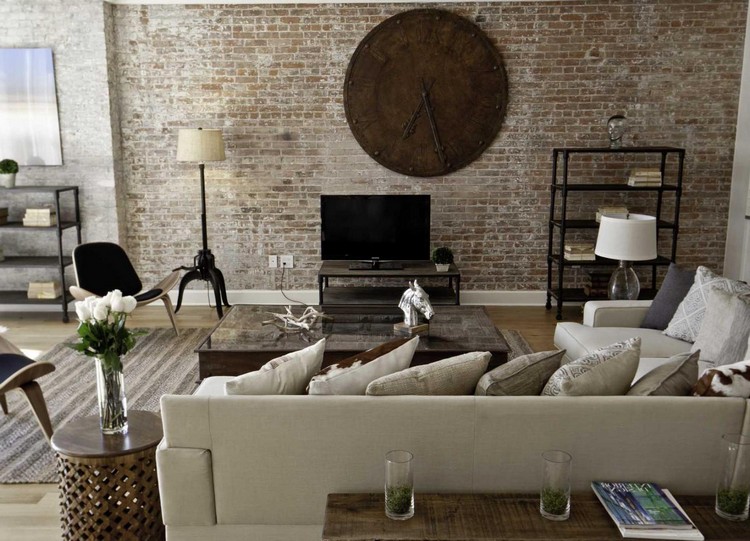
-

-
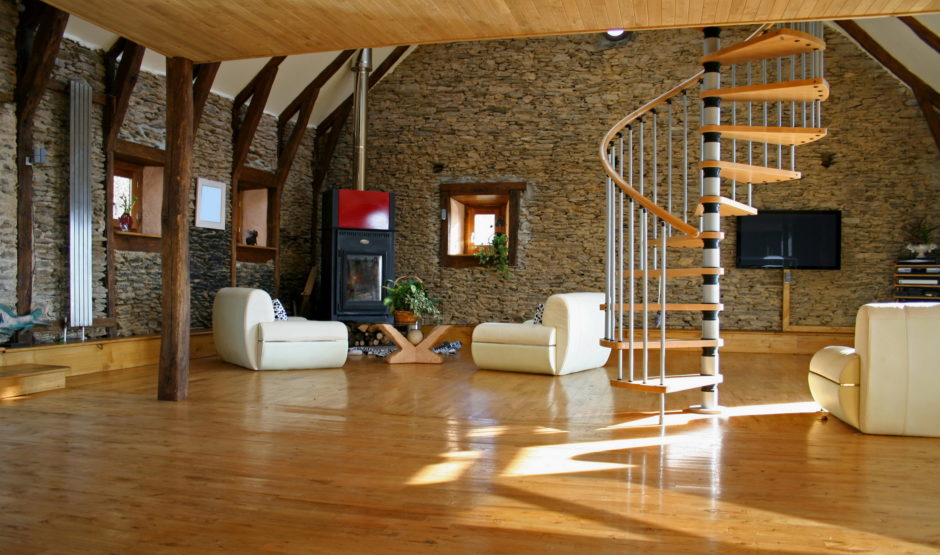
-
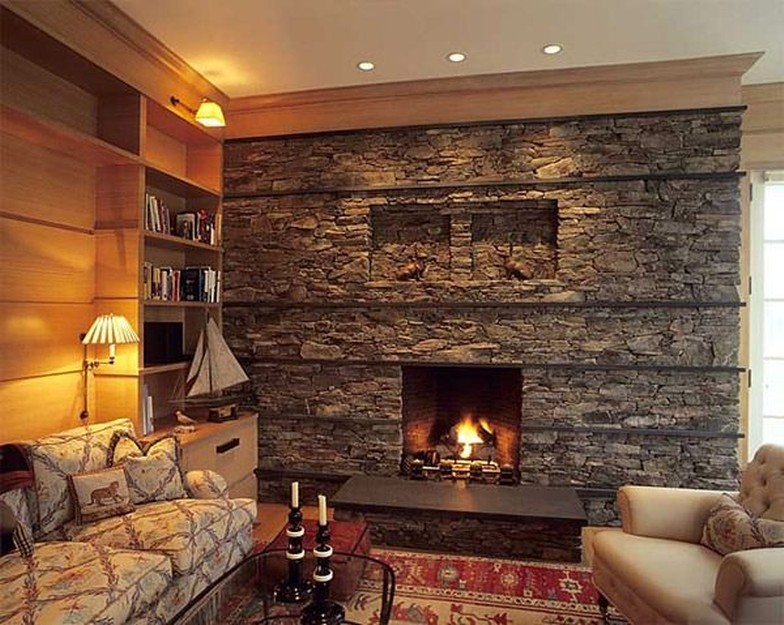
-
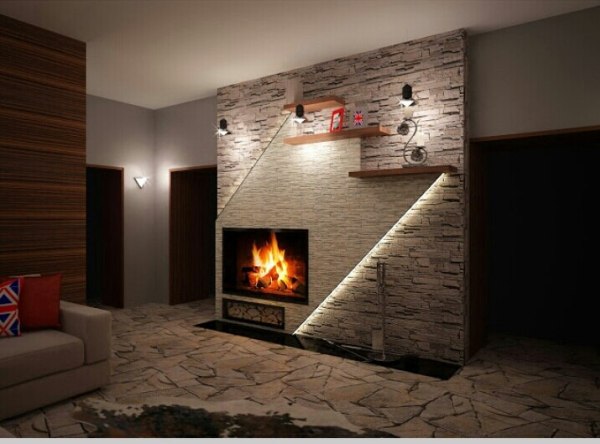
-
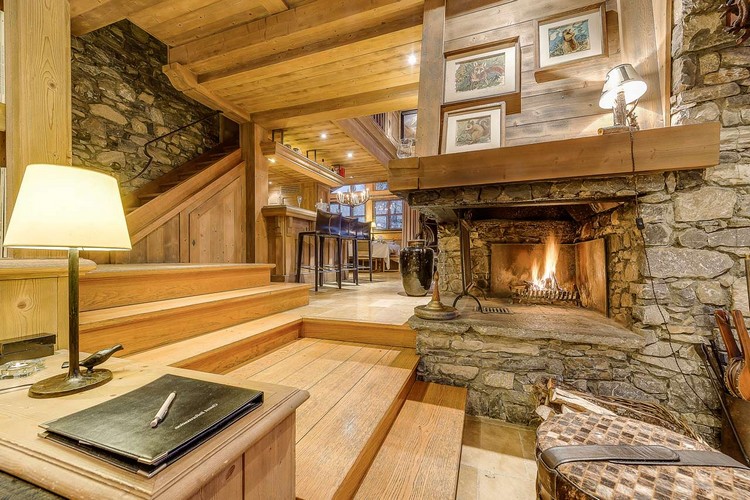
-
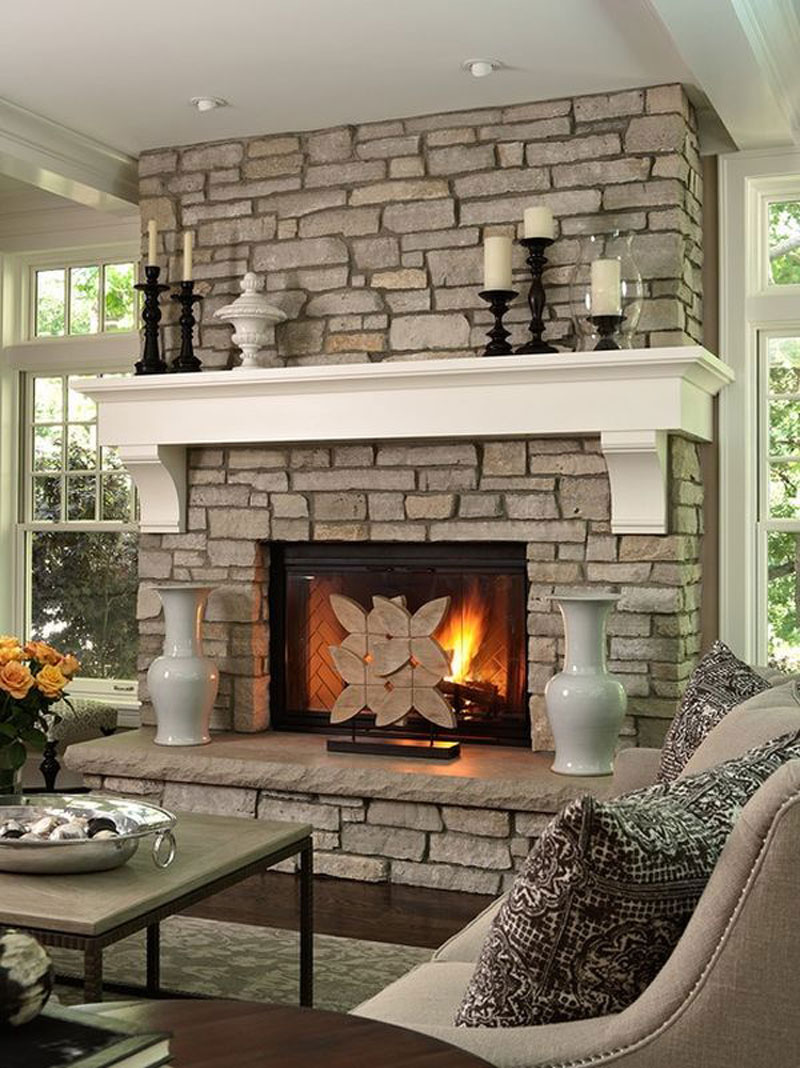
-
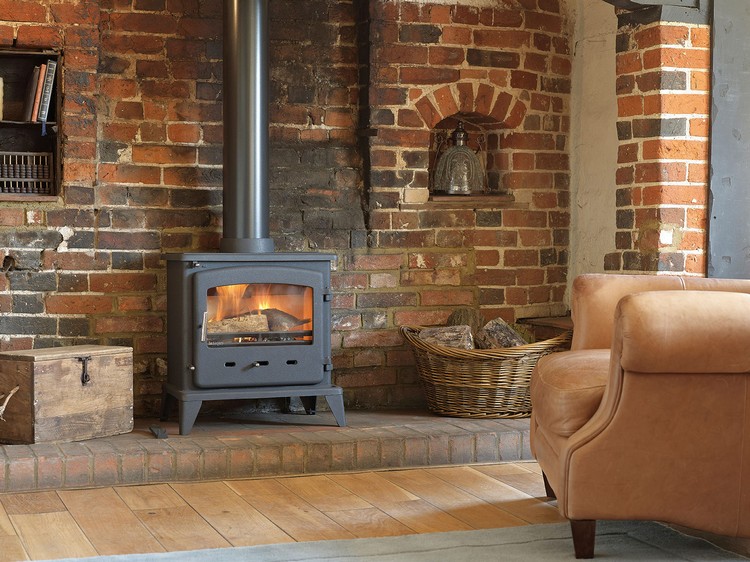
-
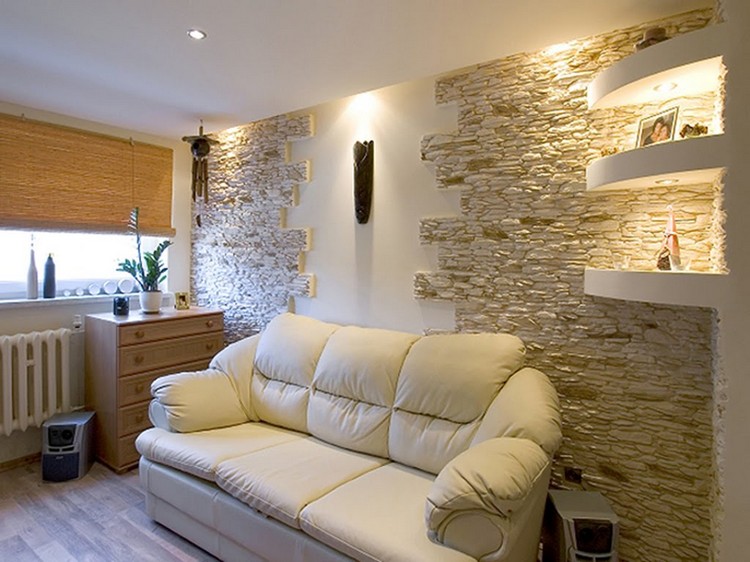
-

-
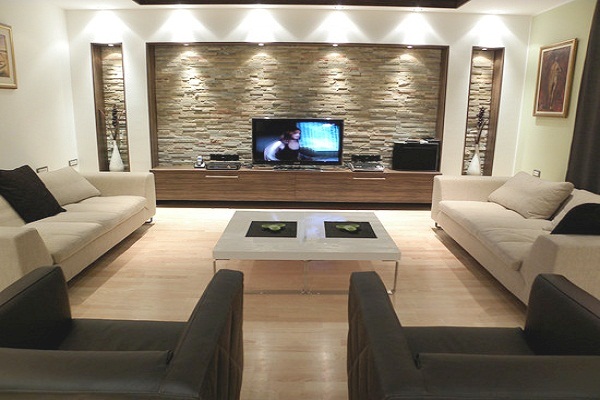
-
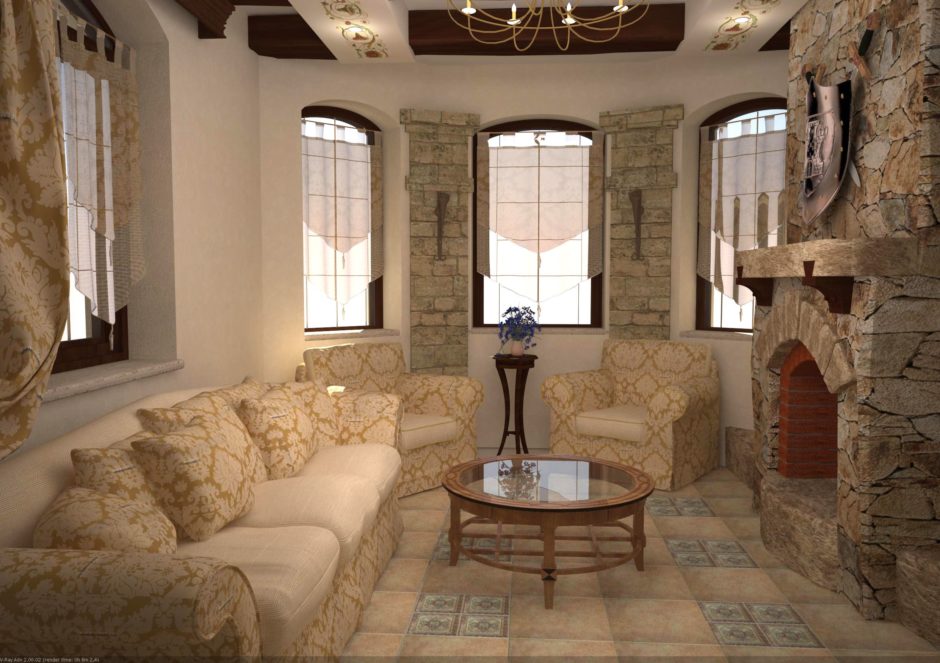
-
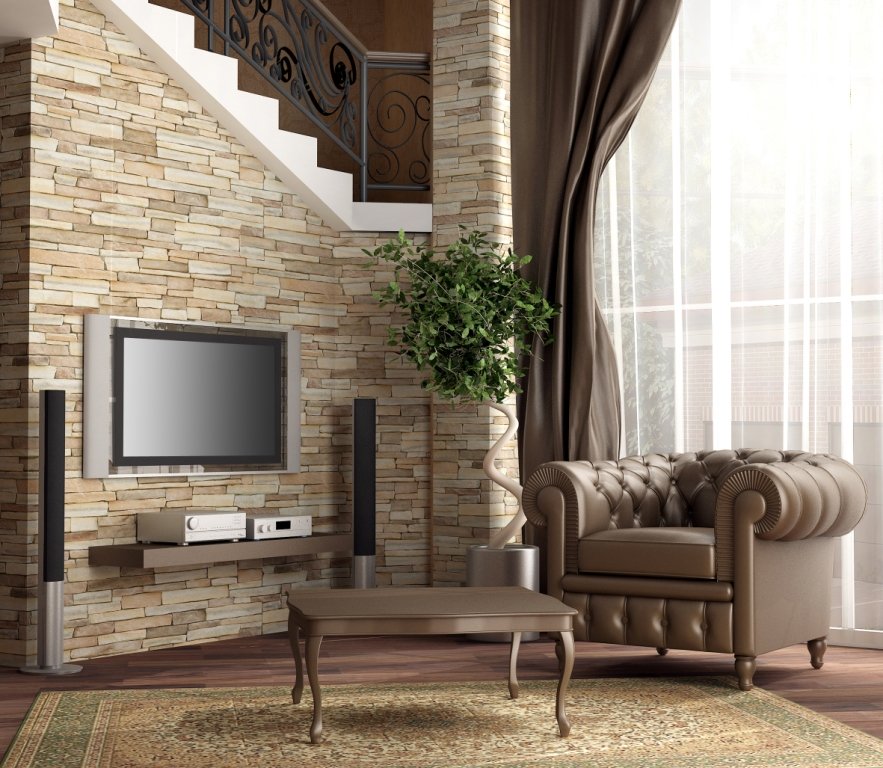
-
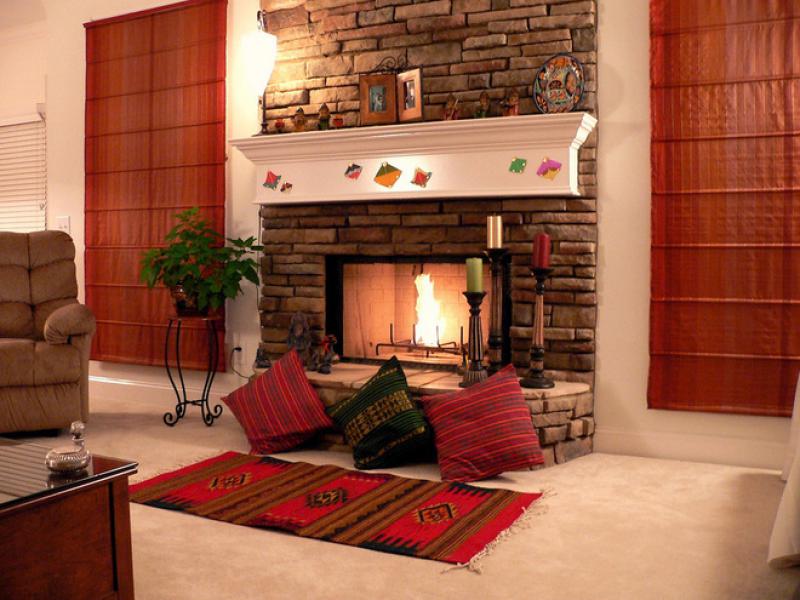
-
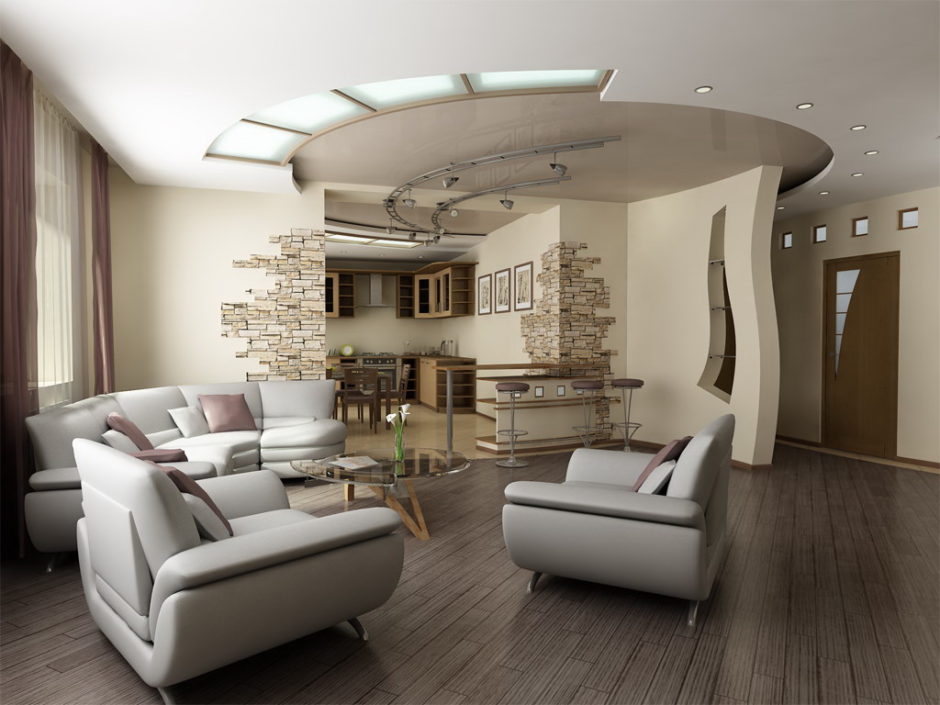
-

-

-
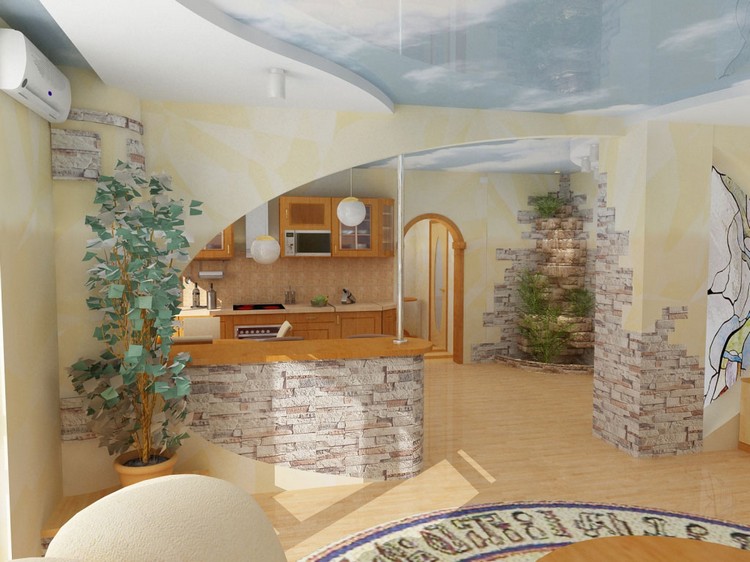
-
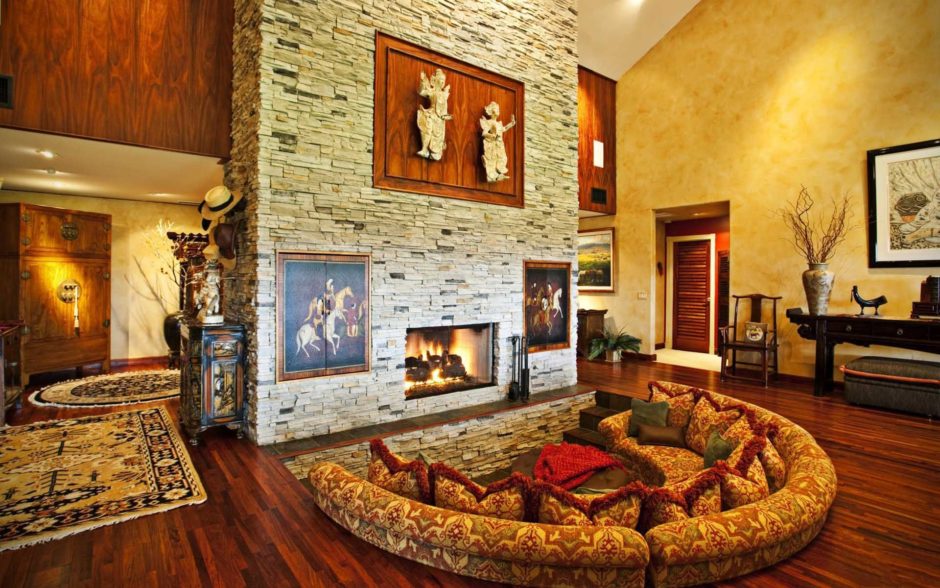
-
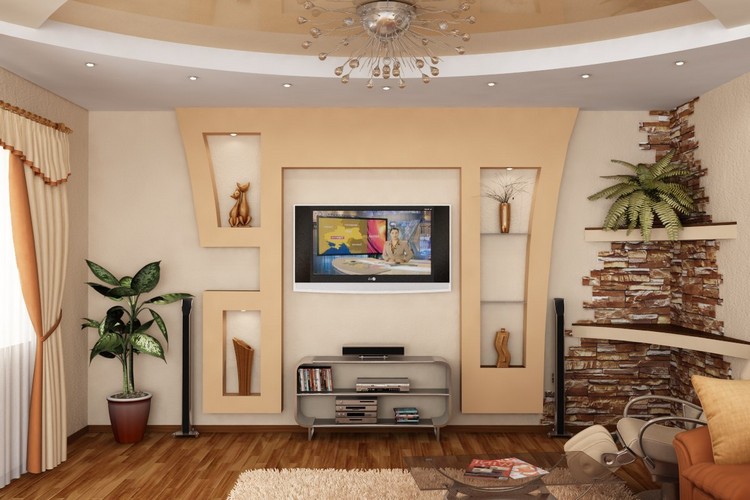
-
